
13218307041
Toddler kids baby child children Sensory Summer Garden Tinker Play Nature Outside outdoors
Tinkering In the Garden:
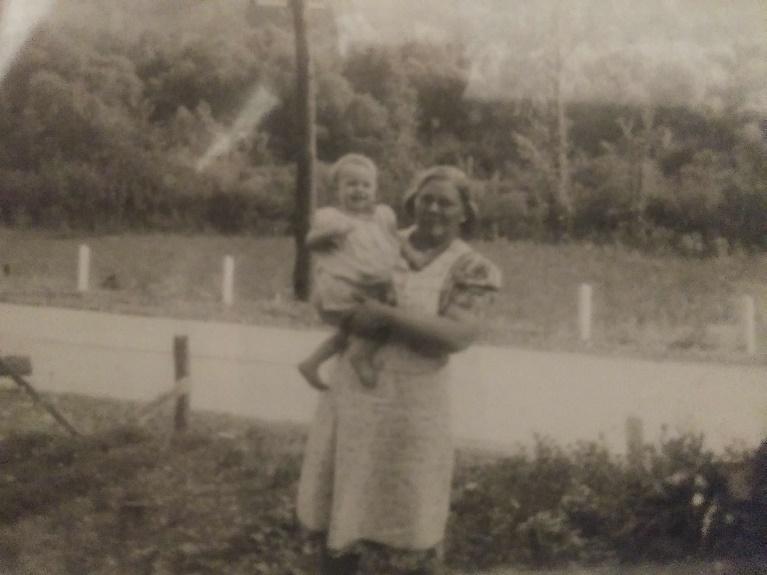
Gardening with a baby is very doable and it can even be rewarded once your baby is a few months old and everything is new to them. It's just one of the things that you still do outside. Strollers, bassinettes, blankets, pack and play or a safe spot in the shade can be used outside so you both can enjoy some fresh air and sunshine every morning. Women have done it for generations. This picture i
s of my mom (the baby) and her grandmother working and playing in the garden together. (Which she absolutely loved to do all her life.)
Grandma Schaumburg didn’t know, back in 1941, that she was shaping the interests of many generations of women in our family. She was just playing with her first grandchild in the garden and teaching her a little about our world along the way.
...And she made the best salads just from whatever was ripe in her garden.
When I was little, I was so fascinated with her medicinal herbs that she grew to heal her community and that was when I my interest in natural medicine from. My two sisters became florists and we all gardened with our babies nearby. In fact, when I was purchasing items for baby care, I was always thinking through how it could be used outside.
As our babies grew, our children loved to help and play in the garden just as we did as children. I am sure it will last through this next generation as well.
So, you too can inspire generations or spur a family tradition of gardening with your children. Just follow some common-sense measures and make it a great experience for you and your family.
::::::::::::::::::::::::::::::::::::::::::::::::::::::::::::::::::::::::::::::::::::::::::::::::::::::::::::::::::::::::::::::::::::::::::::::::::::::::::
Scroll Down to Lower Sections For:
-Building Secret Small Worlds Together
- Resources That Will Turn You Into a Nature Expert -Natural Invitations to Play and Tinker with Loose Parts
-Play Prompts 15 Creative Gardening Projects for Families
::::::::::::::::::::::::::::::::::::::::::::::::::::::::::::::::::::::::::::::::::::::::::::::::::::::::::::::::::::::::::::::::::::::::



Babies learn through seeing, hearing, smelling, tasting and touching. Give them a full sensory experience when it comes to gardening. Just chatter away explaining what you are doing and why. They will absorb much more than you think they will. Plus, hearing the sound of your voice makes them feel comfortable in the garden. You may show them different colors of flowers, let them hear the drip of water, let them smell fragrant flowers, and let them touch plants and you can also buy some fruit while gardening. This way, you ensure that your baby will have a fun.
Exercise reasonable precautions when allowing babies in the garden…
here are suggestions from our generation.
For parents who love nature and gardening, we want to include our children in our hobbies. Many people particularly find in therapeutic to commune with nature and to plant your own garden, and it is a good idea to bring your baby with you on this journey.
A few months ago, Hope was outside celebrating the first snow in Wyoming. I was amazed to see how relaxed and peaceful she was in the photographs. So, I commented. She said she was glad she had a childhood where she could go out in nature and bring nature inside the house anytime. As an adult, she knows that nature is her happy place: and nature is everywhere. She just has to open the back door.
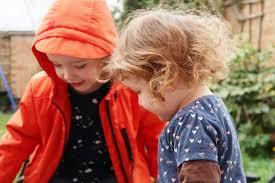
Use a carrier, bassinette or stroller for small babies or find a sturdy, lightweight playpen or pack and play for a shady spot near the garden for more active older babies. It may seem obvious to most people, but you should avoid taking the baby out in the heat of the day unless you have a shady area.
As your baby grows and is able to walk and stand and maneuver themselves, they will quickly learn how to navigate the backyard, however accidents do happen. Use your head and do whatever you can to make it a safe environment. Move or remove spiky plants, branches, and sharp rocks so that they won’t be at the receiving end of an inevitable tumble. I gave Hope a plastic inflatable pool as play space with play gardening tools and other things to keep her occupied. We also used a baby safe picnic playset and a set of insects.
Once you learn how to do it, gardening can be a fun learning experience for both you and your child. This experience will open your baby's eyes to the beauty of nature and will expand his world from the four corners of your house. Here are some helpful tips where it comes to gardening with your baby.
Enjoy Your Time with Your Child
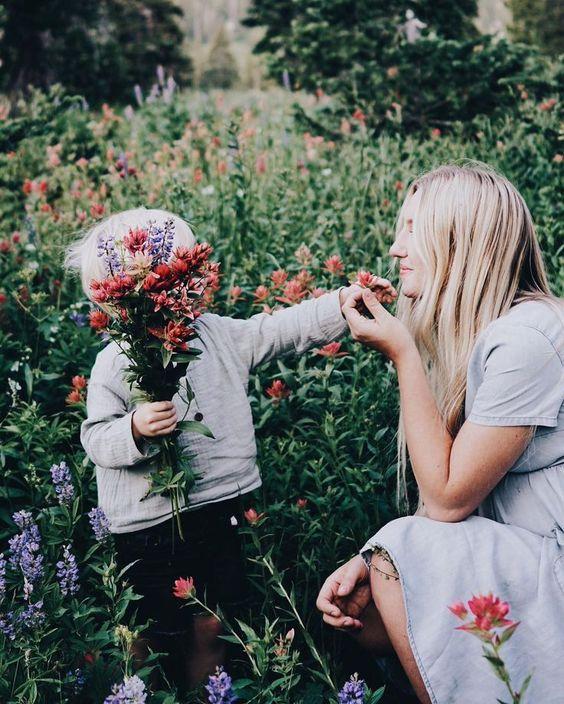
Bringing a baby with you in the garden is not about being productive at planting trees and weeding your garden. This is about spending quality time with your child so the main objective should be to explore and enjoy the surroundings with your child. Let your baby enjoy the breeze and the sights of green plants and colorful flowers.
Babies learn through seeing, hearing, smelling, tasting and touching. Give them a full sensory experience when it comes to gardening. You may show them different colors of flowers, let them hear the drip of water, let them smell fragrant flowers, and let them touch plants and you can also buy some fruit while gardening. This way, you ensure that your baby will have a fun and productive time at learning what happens in their surroundings.
Infants and toddlers are often thought of as “too young” to be involved in gardening, but they can be engaged through watering, harvesting, digging, and exploring worms, insects and birds. The best way to help these ages benefit from a garden experience is through their senses.
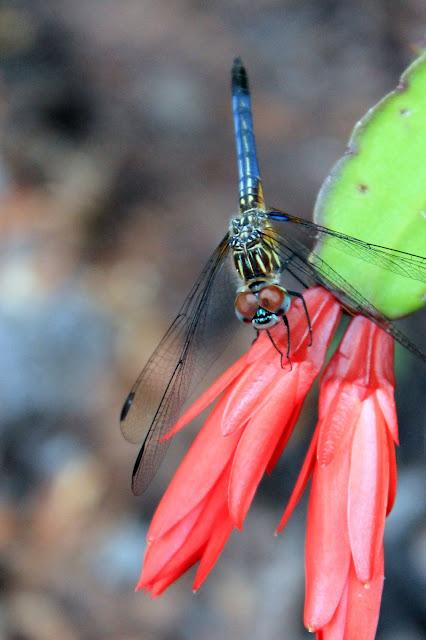
Explain the World
You are not in the garden to grow plants; you’re using the garden to grow your child. Everything out there is an opportunity to show how the world works. By planting seeds together and watching them grow into cabbages, your child learns about cause and effect. Show him the difference between the heads of cabbages and the spot left bare after he trampled the seedlings. I don’t talk enough with my son indoors, but when we’re outside he has so much to ask, and I have so much to share.

Treefrogs like to hide in the leaf axils of bromeliads, elephant ears and gingers.
You can attract wildlife to your garden with flowers, native shrubs, water and bird seed so that your young child will have the opportunity to view and interact with the animals that visit. This also gives you a golden opportunity to teach about gentleness towards animals and eventually, other people.
Sensory Play in the Garden
Interactivity – Design gardens to encourage interaction with nature and inspire a little playfulness.
Sitting, standing and climbing areas may include benches, logs, platforms, and bridges. Most interaction with a garden will happen at ground level, but a secondary level offers older infants and toddlers’ opportunity to “pull up” and explore.
Create opportunities for children to move through the garden. Being “in” the garden is more engaging than looking “at” it.
Consider a variety of places for the infants and toddlers to walk and move. Paths and defined areas may have different types of surfaces – sand, flagstone, wood chips, etc. – as well as a variety of inclines, steps, etc.
Include a sand box and/or a designated “dirt digging spot” in a shaded area.
Integrate a sensory opportunities throughout a playground area, intermixed with slides or climbing structures.
Grow edibles. What better interactive sensory experience than eating?! Edible plants are not only safe features on a playground (ensure the whole plant is edible) but can also be integrated into meals or snack time to broaden the experience.
Include classroom or outdoor activities in which children help create parts of the outdoor learning environment or garden. Even young children can help plant, make a scarecrow, create a mural, water plants, or scatter birdseed.
Create child size places, such as vine covered hide-a-ways or tunnels.
Sight – Color, shape, visual texture, movement, light and shadow.
When planning year- round sensory experiences for children incorporate colors, shapes, light and special features throughout the year.
Plant flowers of varying colors that bloom at different times of the year.
Include red-leafed, soft, grey foliaged and variegated plant varieties.
Make use of contrast, such as clustering plants of different shapes, sizes and colors.
Consider planting long grasses or ‘weeping’ tree varieties that will move in a breeze.
Include plants and features that appeal to butterflies, such as herbs or flowering trees and shrubs.
Use trees and plants to screen visually unappealing areas.
Choose trees and shrubs that attract birds (you can include a bird feeder on a branch) and that change their foliage in autumn.
Consider the view from inside the classroom and include interesting plants, flowers, or birdfeeders that children can see from the windows.
Potted plants don’t have to be confined to traditional pots. Be creative and use items such as old shoes, a wheelbarrow, or playground equipment.
Integrate mobiles, mirrors or sculpture into outdoor environments.
Sound –
Many sounds in a sensory garden don’t need planning, such as the sound of wind rushing through the leaves, rustling grasses or singing birds. But, to enhance the variety of sounds you may include:
Dripping or trickling water
Wind chimes (homemade or store bought)
Encourage birds into your garden with a birdbath, nectar or non-toxic berry producing trees and plants
Quiet places (sometimes sounds are too overwhelming)
Touch – Think Texture:
Include soft flowers, fuzzy leaves, springy moss, rough bark, succulent leaves, and prickly seed pods.
Choose hardy varieties of plants that can cope with handling. Place delicate flowers and plants in hard-to-reach places.
Place plants and trees close to walkways so children walking along the path may be brushed by foliage.
Don’t cut low-hanging tree branches unless they are a safety hazard.
Some species offer a variety of textures within a single plant, such as a southern magnolia, with leaves slick, shiny, and dark green above, and soft, felted brown beneath.
Intersperse rocks, wood, fabric or toys of different sized, shaped and textures.
Smell – Smells don’t just have to come from blooming flowers.
When planning a sensory garden for infants and toddlers, think about both strong and subtle smells that they may explore directly or indirectly.
Plant flowers with subtle smells that require you to stick your nose into the petals, such as violets.
Consider planting a non-slip creeper or herb on or near a path so that, when you walk on the plant, it will release a beautiful aroma – for example, thyme or mint.
Don’t clump too many aromatic plants in the one area, as the confusion of different scents will be overwhelming. Space scented plants at intervals around your garden.
Choose plants that are pollinated by birds or insects rather than plants that release their seeds into the air. This will help any children who suffer from hay fever or asthma.
Introduce fresh mulches, wood shavings, grass clippings, etc. which may have new scents.
Taste- A favorite sense.
Everything in an infant and toddler garden should be edible, or at least non-toxic.
Consider buying small fruit trees for your garden.
Edible flowers are not only beautiful but safe plants for the playground.
Grow veggies and herbs in your school yard and use them in cooking or sensory experiences in the classroom.
Early introduction to fresh, healthy foods will have an important impact as children begin making their own food choices.
Downloads
Sensory Gardens
There is no perfect guideline when it comes to spending quality time with your babies. You can tweak this and add more fun stuff such as bringing out toys for your children to play in the garden. As parents, it is expected that you know what the best is for your child and your protective instincts will come in naturally.Gardening together is about enriching your life with everything that the garden has to offer, be it mud puddles, surprise blooms or freshly picked backyard produce. Garden is about enriching your life with everything that the garden has to offer, be it mud puddles, surprise blooms or freshly picked backyard produce.
Garden and Nature Play
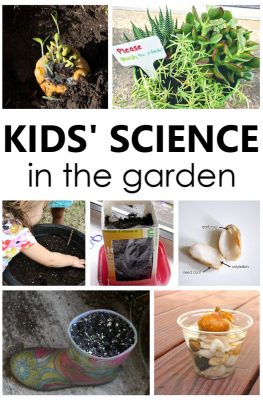
Kids’ Science in the Garden

Easy Science Experiments to Do at Home
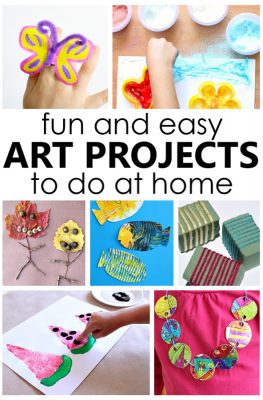
Easy Art Projects
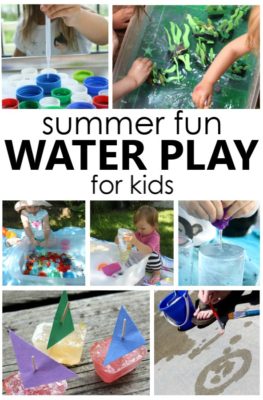
Water Play
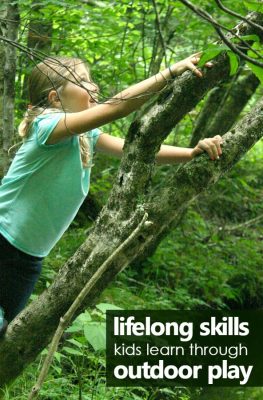
The Vital Skills Kids Learn Through Outdoor Play
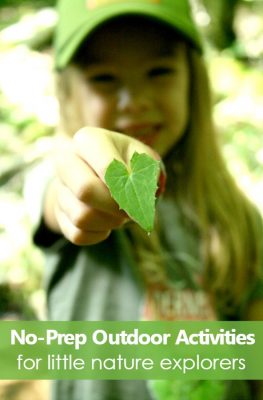
No-Prep Outdoor Activities That Make Kids
Want to Stay Outside All Day
Want to Stay Outside All Day

Kids’ Outdoor Play In The Garden
My YMCA Curriculum Featured on How Stuff Works:
10 Earth Day Activities to Celebrate Our Planet - HowStuffWorks
Animal Activities
15 Creative Gardening Projects for Families
15 Creative Gardening Projects for Families
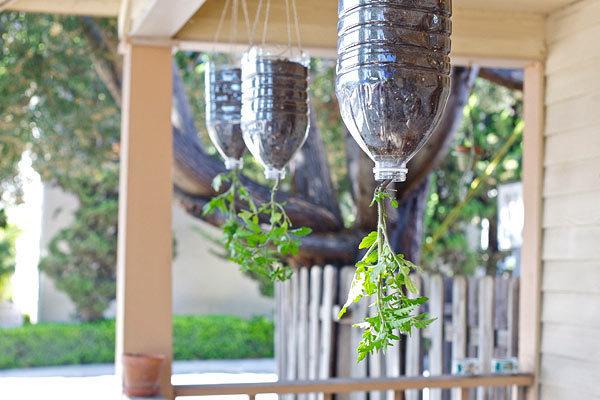
Spring has finally sprung! It’s time to get outdoors with your little sprouts and have fun exploring, learning and playing. The garden is a great place to enjoy the best spring has to offer as a family. To get started, check out these 10 inspired gardening projects for kids.
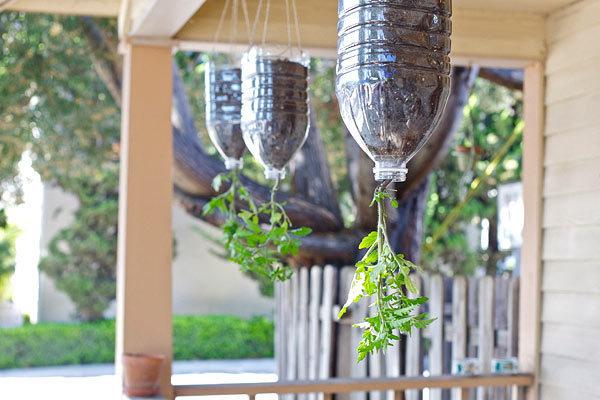
Plastic Water Bottle Hanging Tomato Planters
Bonzai Aphrodite shows your family how to make use of a small space, like a deck or front porch, to produce delicious tomatoes in empty water bottles. At the end of this project, you can say you taught your kids about recycling and a plant’s life cycle at the same time. Score!
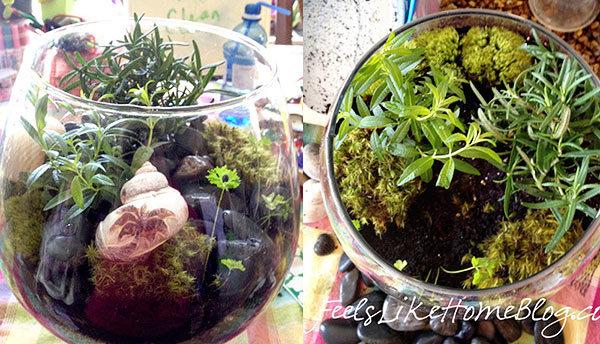
Super Inexpensive Herb Terrarium
Feels Like Home offers smart, money-saving tips for creating your very own herb terrarium. Customize this fun project to grow the herbs you use most, and add decorations to personalize the terrarium. This garden craft is so neat, you may find yourself putting one in every room.

Egg Carton Greenhouse
Little kids will love Hazel and Company’s Egg Carton Greenhouse project. With a simple household item and some seeds, you can create a special learning and bonding experience for your mini green thumbs. You’ll even find a super-smart tip to keep this project mess-free when it’s done.
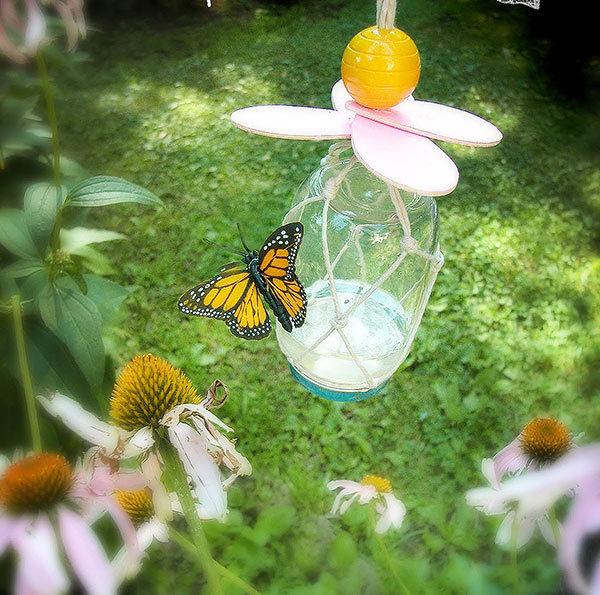
Whimsical Butterfly Feeder
Create magic and fun for your kids by making Mother Rising’s whimsical butterfly feeder. You’ll need a jar, some string, a bit of knot-tying know-how, and the secret ingredient: butterfly food! Then it’s time to watch the garden for signs of hungry winged creatures.
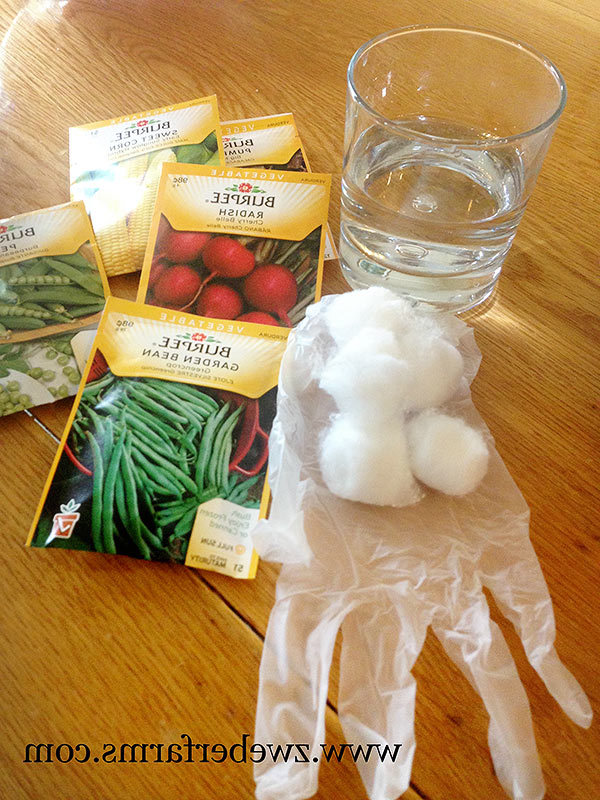
Garden in a Glove
To find a project that helps kids learn about seeds, it doesn’t get much simpler than Zweber Farms’ Garden in a Glove. This fun and educational activity is ideal for sprouting gardeners who have never seen a seed up close before. And it’s perfect for you because mess is minimal.
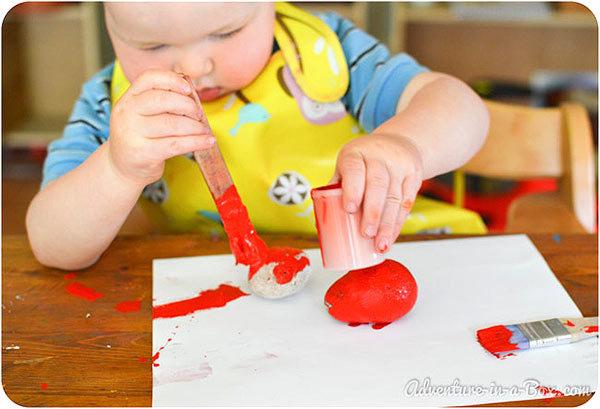
Adorable Painted Garden Markers
Any kid old enough to hold a paintbrush can help with this sweet gardening project: creating painted garden markers from stones. Adventure in a Box shows you how to make comical smiling strawberries, concerned carrots and silly squashes; all you need are rocks, paint and a sense of humor.
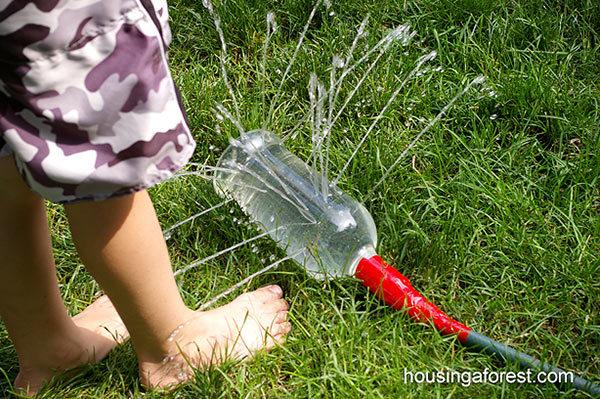
Multipurpose Homemade Sprinkler
What could be better than an outdoor project that serves an important function in the garden, but also provides hours of fun for little ones? Housing a Forest made a homemade sprinkler using a plastic bottle, some tape and a drill. Genius! But we must warn you: unstoppable laughter ahead!
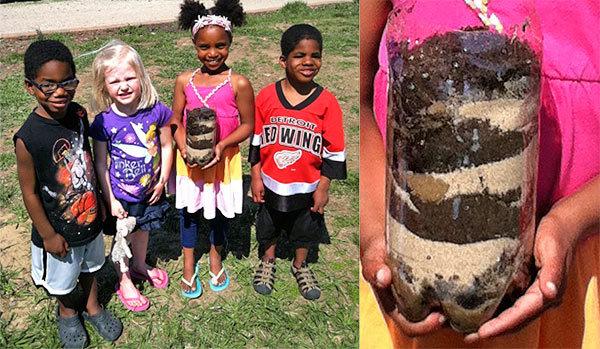
Earthworm Motel
Fact: Kids love searching for bugs and worms. Green Kid Crafts offers the perfect project for housing the slimy guys your mini bug lovers find. It’s an Earthworm Hotel, the Four Seasons of the worm world, featuring dirt and water. What more could a worm, or a kid, ask for?
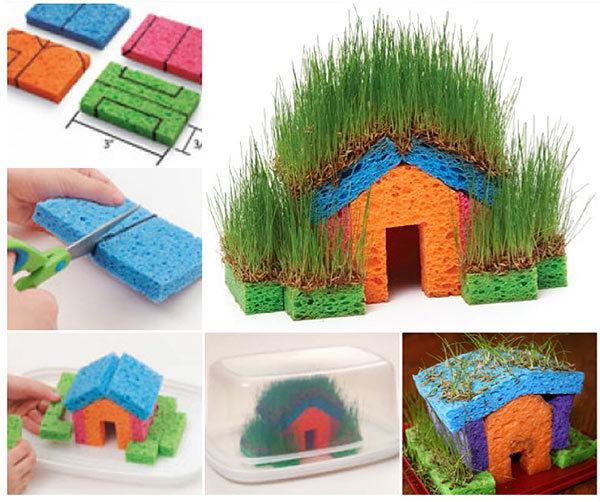
Sponge Grass House
Everyday kitchen sponges become an inspired gardening craft with Wonderful DIY’s Sponge Grass House. Kids will adore this gingerbread house meets Chia pet activity. G-g-g-guaranteed!
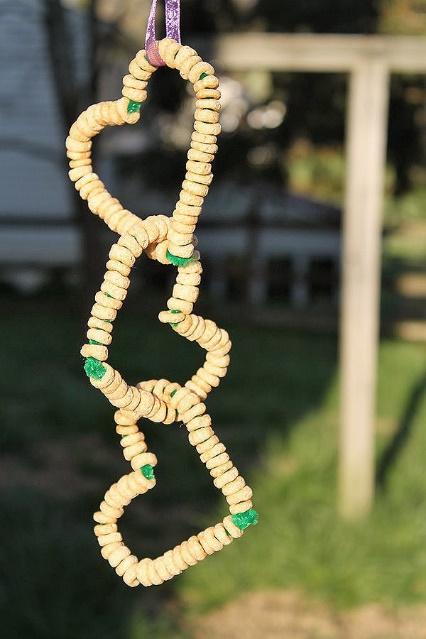
Cheerios Bird Feeder
What kid doesn’t love Cheerios? Or watching birds? Combine these two peewee passions and you have 366 Days of Pinterest’s Cheerios Bird Feeder project. Future ornithologists, this one’s for you.
Hope would make candy cane shape feeders for our yard and Mt. Falcon Park. They were easy for her to make and she could hang them herself.
Make A Toad Abode (Fairies Welcome!)
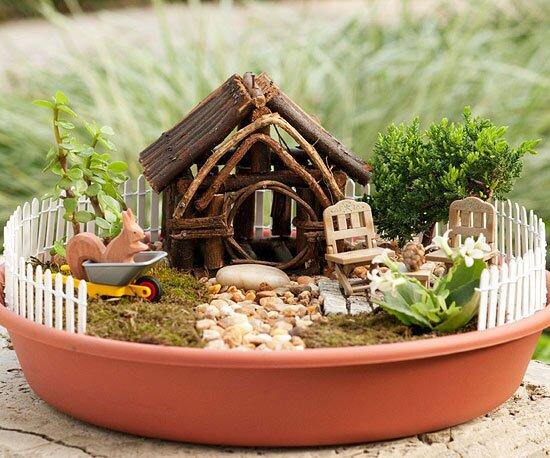
CREDIT: PHOTOGRAPH BY KINZIE + RIEHM
Here's how to create a miniature piece of real estate that kids can call their own; we think it would also be the perfect vacation home for a toad. Start with plants and mosses that will thrive in a container in your region -- a local nursery can make suggestions. Drill a few drainage holes in the bottom of the container (we used a 24-inch-wide plastic plant saucer), then fill it with potting soil. Seat the plants and moss in the dirt from largest to smallest and add plastic toys and hardware- store finds. Be careful not to overwater your abode.
Pictured: Once a decorative birdhouse, this tiny home is encircled by a fence from a craft store.
Fun tips: Create paths and a patio with hardware-store gravel and mosaic tile. Our patio furniture is from a Calico Critters toy set.
Building Secret Small Worlds Together
Building Secret Small Worlds Together
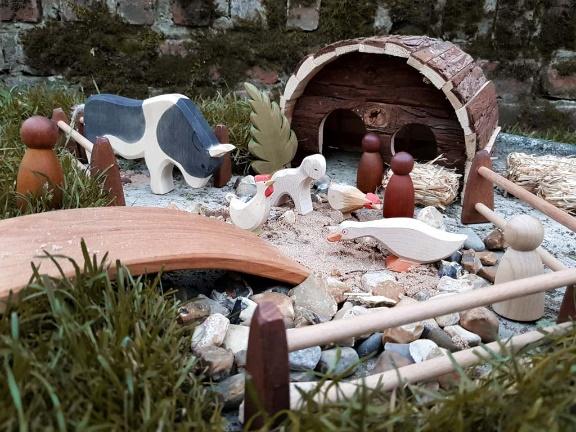
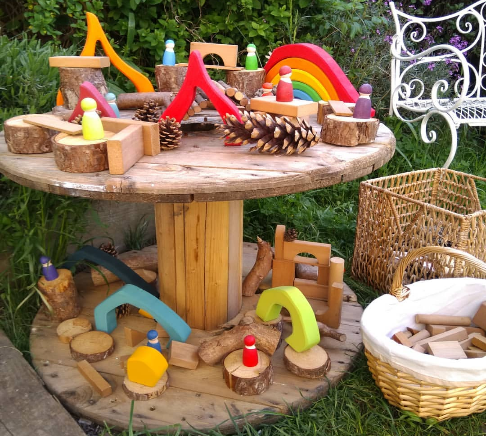
Magical Places & Secret Spaces
Even as an adult I still find myself drawn to intriguing, mysterious places. A maze, a tunnel, a secret door – I can’t wait to find out what it’s like and where it goes. As a mother and teacher, I loved small world play. Acting out every day and imaginary scenes with small characters and miniature props filled most of my day. My characters and props that I had were very important to me, but almost as important was where I played. I’d usually be tucked in a corner, hiding behind a door, in a flower bed or under the shade of one of our walnut trees; a magical, secret place to play, explore and learn. This is really the only imaginative play that I am up for anytime.
Environment
Grapat Nins are pretty fabulous most of the time, but even more lovely tucked away for small world play in the woods. The setting makes such a difference to how children interact in their play.
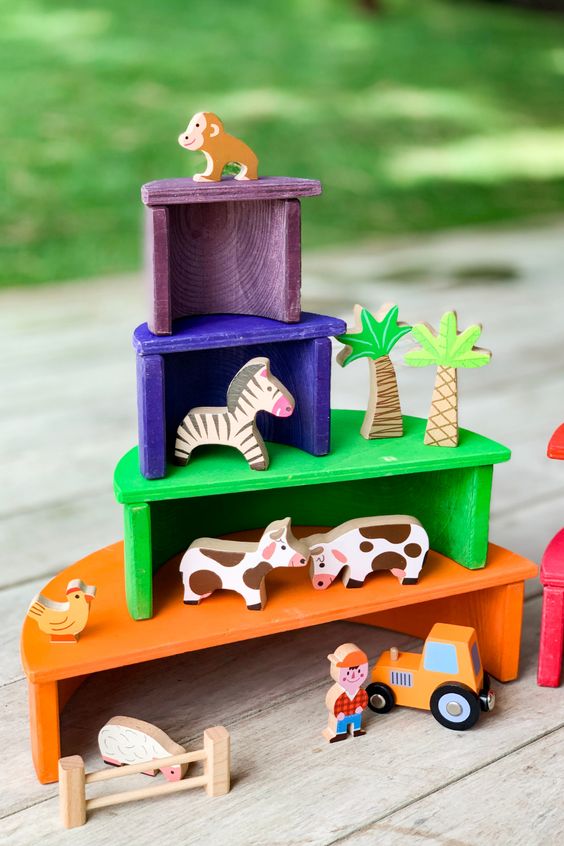
We’ve tried very hard with the design to make secluded, shady spaces. Places for sand and water trays and large plant pots. Hideaways and nooks for small world adventures.
Places to Create Small World Adventures Outside
I’ve tried to add a list of places that would work for very small scale outdoor spaces as well as larger areas. You could even use some of these indoors; if you have no outdoor spaces you could bring the outdoors inside using some of the ideas;
Sand Trays
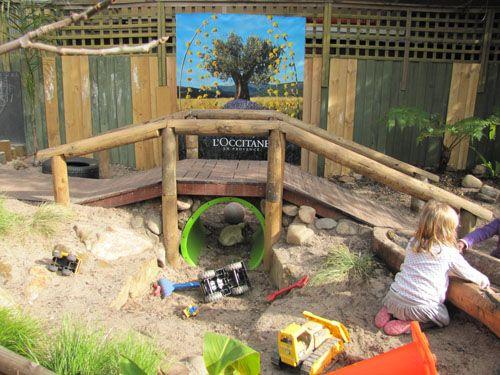
Water Areas
Old Tyres
Plant Pots
Small Trays or Boxes
Cable Reels
Large Jars
Tuff Trays
Play Garden
Dirt pile
Sand box
Base of a tree
Playsets from Lego, Playmobile, Spark Create Imagine, Fisher Price etc.
Kids size play wagon or wheelbarrow
Crate
Plastic containers
Wash tub
Baby’s bathtub
Kiddie pools
Serving trays or bowls
Any type of a bin
Water or sand table
Upcycled Coffee or end table
Upcycled pots and pans
Small World Outdoor Ideas
I love the use of the cable reel above by @natural_explorers_childminding; it looks so inviting. You can get reels like this from ‘Scrapstores’ here (these are recycle centres, often in cities, that have donations from industry of all sorts of random things – reels are often donated) or check out your local builders’ merchants.
The circular shape I’ve always found to be really welcoming for small groups of children to play together; great for nurseries and schools, but also a lovely way to encourage cooperative play with siblings and if friends come round to play. The use of natural resources from outside with beautiful wooden toys and loose parts gives great scope for open ended, small world play suitable for a range of ages.
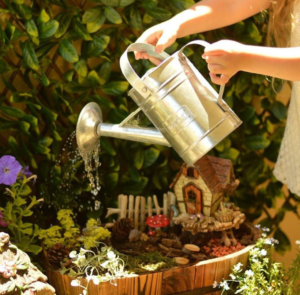
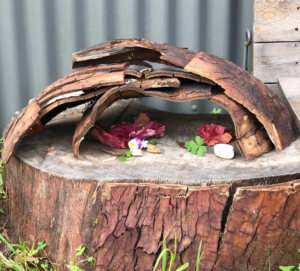
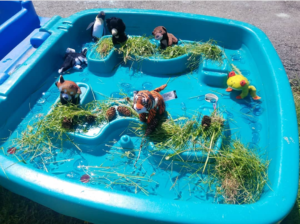
Small World Play Themes or Scenarios
Please do add in the comments below any other small world play ideas you have or have used with your children or classes.
Beach
Woods
Forest
Zoo
The Poles
Story Related – The Gruffalo
Seasons
Rhymes – Speckled Frogs

Train
Dragons
Rock Pool
Town
Construction Site
Fairy Lands
Jungle
Farm
Dinosaurs
Ocean
Space
Ice Age
Medieval – Knights
Pirates
What are the Benefits?
Small world play scenes help children to make sense of the world around them, through a full sensory experience. It allows children to develop their understanding of big themes and concepts and make links with what they already know and what is new to them. This type of play is especially useful to help explore situations that would otherwise be hard or impossible to do. For example, events that happened in the past such as medieval times and a world with dinosaurs or places that most people can’t reach such as the moon. These wonderful opportunities can take you all around the earth and beyond visiting different cultures and climates with animals, plants and resources that are not typical to the place that you live.
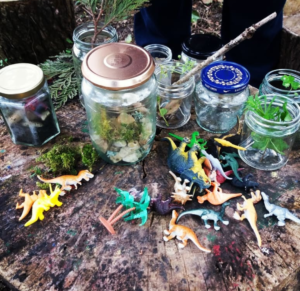
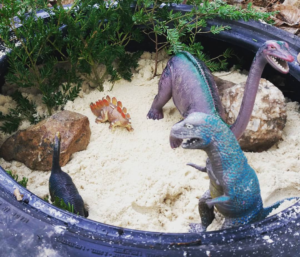
Developing Small World Play Skills
Some children can be quite rigid in their play choices. When I was teaching I remember having some children who would only want to play with a certain toy such as the Lego, Playmobil or the train track. Now, some people would say, ‘that’s their interest so leave them too it.’ I’m very much in favour of going with the interests of the child, but feel it is important to be able to broaden the experiences children have and help them to discover new interests too. Small world play is perfect for this.
Take Lego for example. If you have a child who loves playing with Lego you could incorporate the Lego into a small world theme. If your little one has made a rocket, then a space scene set up with their rocket might take their play in a different direction. A Lego boat could find its way to an ocean setting. A Lego car could have a city to explore. These are just a few ideas. You may find that your Lego enthusiast suddenly has a passion for the universe, sea turtles or skyscrapers. If you’ve got a child who loves playing with a particular toy and you want ideas of small world scenes that could broaden their experience leave a comment and I’ll get back to you with some ideas.
Essential Skills
Whether playing alone or collaboratively with small worlds there are some very important skills that this type of play help with:
Developing narratives in their play – some of the beginnings to story development. Skills including sentence syntax, oral fluency and composition are supported; character development, scene setting and plot become more concrete concepts.
Fine motor development and hand eye co-ordination are practised.
Moral dilemmas are explored in a safe environment helping to develop a moral code and an understanding of what they believe to be right and wrong.
If working collaboratively then turn taking, sharing and negotiating skills honed.
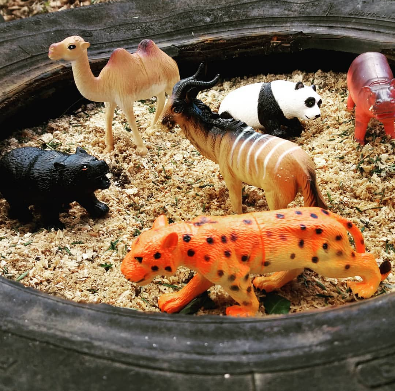
How can I Encourage and Extend?
Having loose parts – letting children design and set up their own worlds
Access to photographs and books to act as a stimulus
Making own props and characters
Making own signage, maps, posters, fact sheets etc.
Recording stories either through videos, drawings or writing
Act out a story or movie scene
Playfully talk out about something related that may have scared or frustrated them
Easy Printable Play Mats
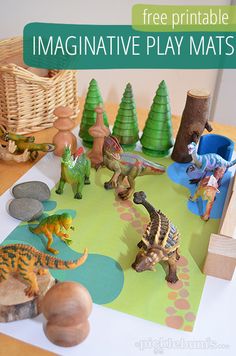
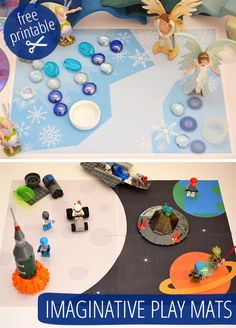
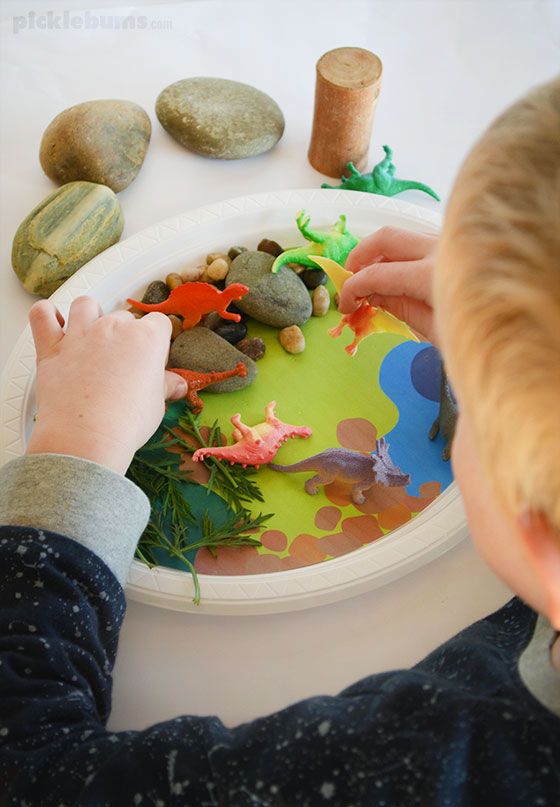
Play Plates - quick and easy imaginative play.
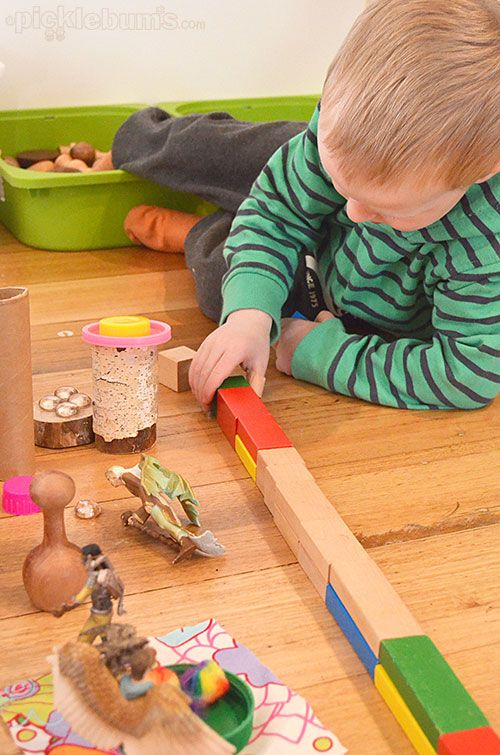
How to Set Up Great Block Play at Home
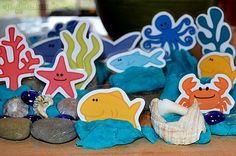
6 More Simple Play Dough Activities
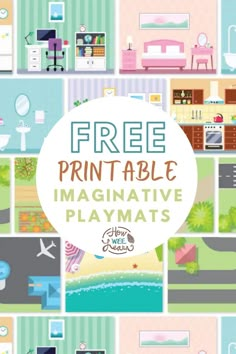
Free Printable Imaginative Playmat
Natural Invitations to Play and Tinker
with Loose Parts -Play Prompts
with Loose Parts -Play Prompts
The Wonders of Invitational Play:
How Parents Can Get Their Kids Playing More Independently
An invitation to play is one of the simplest yet most effective ways for parents to help their kids learn and grow. This strategy involves providing opportunities for children to explore, experiment, and engage in fun activities on their own.
Here we will discuss what an invitation to play is, why they are important, and how parents can use them to get their kids to play more independently.
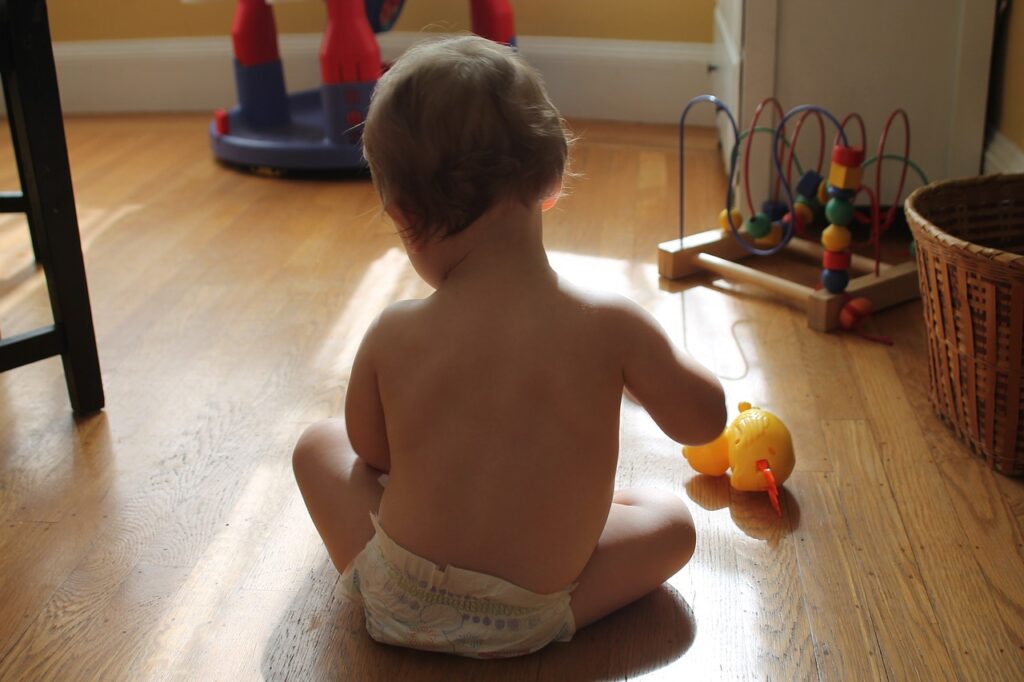
What is an invitation to play?
An invitation to play is an early childhood education concept. But simply put it's when an adult arranges toys in a way that is meant to spark a child’s interest. This can be done with a few simple toys or materials, and it does not have to be elaborate.
The goal is simply to give the child a starting point from which they can explore and experiment. Invitations to play can be as simple as putting out a few blocks or stacking some cups. It is up to the child what they do with the materials.
This is an amazing way to introduce new toys or get your child to expand their play by providing them with opportunities to make connections between toys they may not have seen for themselves.
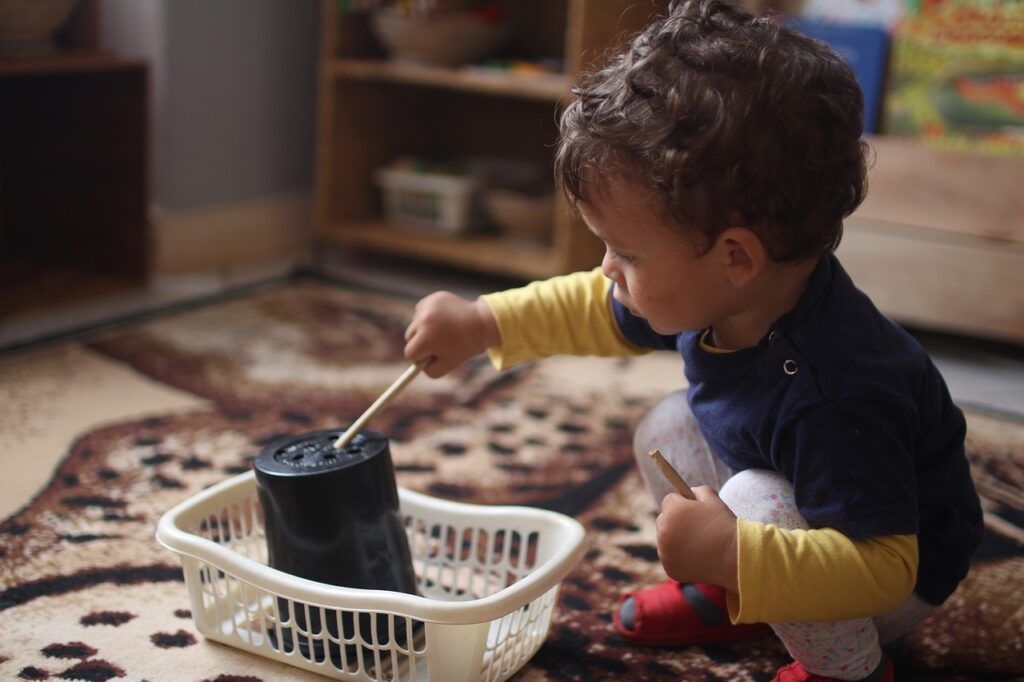
Where did the concept of invitations to play originate?
This concept has made its way from Reggio-inspired classrooms to the everyday parent who is looking to spark their child’s imagination.
Subscribe to Play Learn Thrive!Get updates on the latest posts and more from Play Learn Thrive straight to your inbox.SubscribeWe use your personal data for interest-based advertising, as outlined in our Privacy Notice.
There are blogs, Instagrams, and Pinterest boards solely dedicated to giving parents ideas for invitations to play. And that’s great. However, I think it’s important to note a few things.
I see moms constantly looking to get ideas for invitations to play. They seem stressed because they “can’t think of anything” or they are focused on providing their kids the perfect setup. This is NOT necessary!
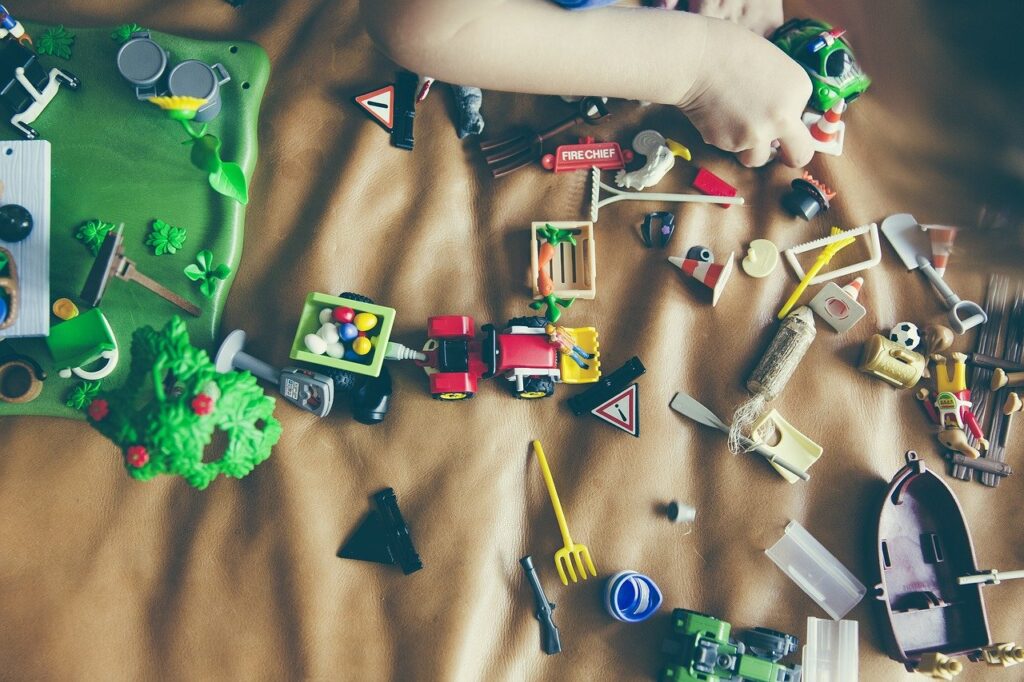
Why are invitations to play important?
There are so many benefits that come from invitations to play! For one, this type of independent play allows children to develop their own interests and skills.
Additionally, it provides them with a sense of autonomy and control as they get to choose what they do with the materials.
Invitations to play also give children a chance to practice problem-solving and critical thinking as they figure out how to use the materials in new ways.
Finally, invitations to play offer a great opportunity for parents and children to bond as you get to watch your child engage in their interests and learn new things.
Subscribe to Play Learn Thrive!Get updates on the latest posts and more from Play Learn Thrive straight to your inbox.SubscribeWe use your personal data for interest-based advertising, as outlined in our Privacy Notice.
6 tips to get started with invitations to play
Think about how your child likes to play right now (what play schema are they focused on?) and try to offer invitations that will support their interests. If your child is really into climbing, you might put out some blocks or pillows for them to use as obstacles. If they love water play, you might set up a sensory bin with different materials to scoop and pour.
Start with a favorite toy as your base. If there is a toy you know your child loves and plays with often use that to get you started. Lay it out in a different way or with new materials. For example, if your child loves to play with cars you might put them on a ramp or add in some small balls for them to “rescue”.
Add in a few additional items that make sense. Add in some loose parts or a few other toys that go with the main toy you set out. You don’t want to overwhelm your child with too many options, but you also want to provide enough materials for them to explore.
Use nature to inspire you. Go on a nature walk and collect some leaves, rocks, or flowers to use in your invitations to play. You can add these items to the invitations you are already using or create new ones based on what you find.
Get creative with everyday materials you have at home. You don’t need to go out and buy anything special for invitations to play. Use what you have around the house! Some of our favorites are toilet paper tubes, squeeze fruit tops,
It’s okay if your invitations to play are simple! The important thing is that your child is engaged and having fun. Don't overthink!
How can I use invitations to play to promote independent play?
There are a few things you can do to encourage your child to play independently using invitations to play.
First, start by offering simple invitations that only require a few materials. As your child becomes more comfortable with this type of play, you can gradually add more complexity.
It is also important to provide invitations that are appropriate for your child’s age and development.
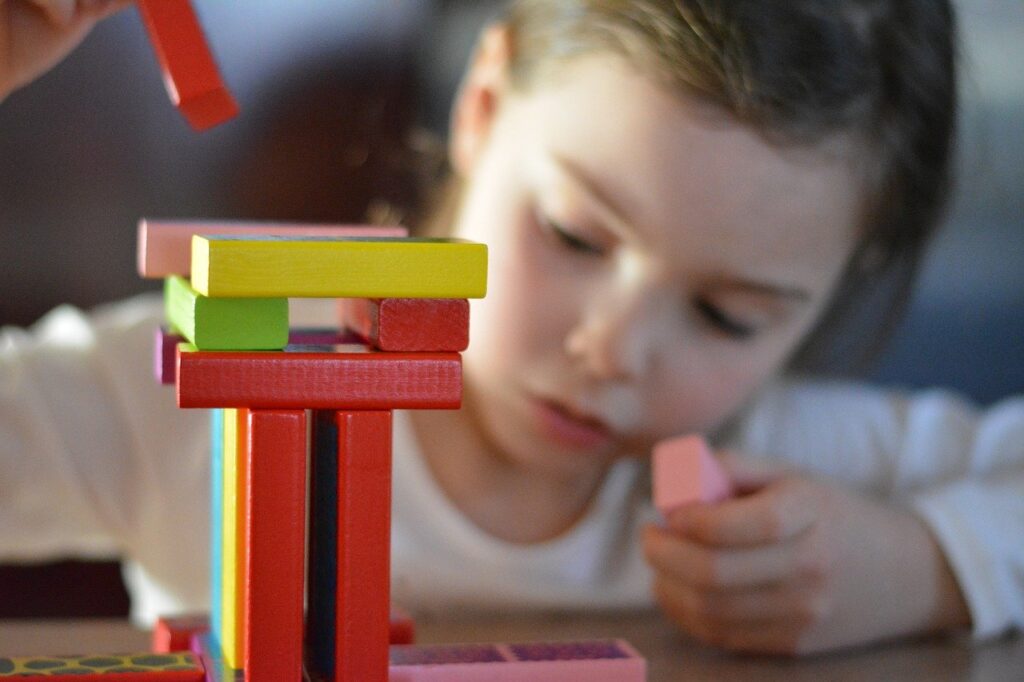
Subscribe to Play Learn Thrive!Get updates on the latest posts and more from Play Learn Thrive straight to your inbox.SubscribeWe use your personal data for interest-based advertising, as outlined in our Privacy Notice.
Another great tip is to set up invitations to play in different areas of your home so that your child can move around and explore as they please.
Finally, be sure to give your child plenty of time to play on their own without interruption. This will allow them to really get lost in their play and explore.
As a side note, know that you can also use invitations to play as a way to introduce new toys or everyday materials. If there is something you would like your child to try, set it up in an inviting way and see if they are
The most important part of the invitation to play is observing your child

This whole idea of setting up invitations to play is really based on being able to observe your child and then offer materials that support their interests and play.
It can be helpful to take some time each day, even if it’s just for a few minutes, to really watch your child at play. Don't interrupt them, just watch (and try not to let them catch you!)
Notice the things they are drawn to and the way they like to play. Children go through very similar schemas of play. If you want to learn more about schemas of play read this. It's eye-opening and will give you a whole new understanding of why your child is doing some of the things they are doing!
Understanding the schemas and spending time observing your child will give you a good starting point for creating invitations that your child will love.
Invitations to play for educational purposes
You can also use invitations to play for specific educational purposes.
If you are working on a certain skill with your child, you can create invitations that target that skill.
For example, if you are working on counting skills with your child you might put out a small collection of objects and a tray that gives them a place to count and sort.
Subscribe to Play Learn Thrive!Get updates on the latest posts and more from Play Learn Thrive straight to your inbox.SubscribeWe use your personal data for interest-based advertising, as outlined in our Privacy Notice.
Keep in mind the most important part of using an invitation to play is that it aligns with where your specific child is…and that might be different from other kids their age (and that's ok!).
Final thoughts on using invitations to play
First, you don’t NEED to be doing this on a daily basis. In fact, you don’t need to be doing it at all for that matter. Your child is perfectly capable of creating their own scenes for play if left alone with their imagination.
That said, I understand wanting to.
Maybe it brings you joy or you appreciate the way it allows your kids to play with things that might not always be top of mind for them. That’s amazing. You’re crushing it…
Again, I would encourage you to keep in mind that creating invitations to play is best done when you’re observing the schema (or schemas) that your child is really focused on at the moment and using that knowledge to create simple setups that build on their chosen focus. The idea is to follow the child.
AND…Don’t stress if this is not your thing (it’s not really mine!).
You can get TONS of activity ideas off Instagram and Pinterest, just PLEASE don’t beat yourself up over not being able to create picture-perfect invitations to play every day–you're looking to create a learning journey that is playful and not stressful.
Big Kids Need Play Too: Why Screens Are Replacing Play and What We Can Do About It Summer Bucket List for Families Who Want More Connection & Less Distraction The Summer Screen Reset: Why Your Child Needs a Minimal Screen Summer (and How to Make It Happen)
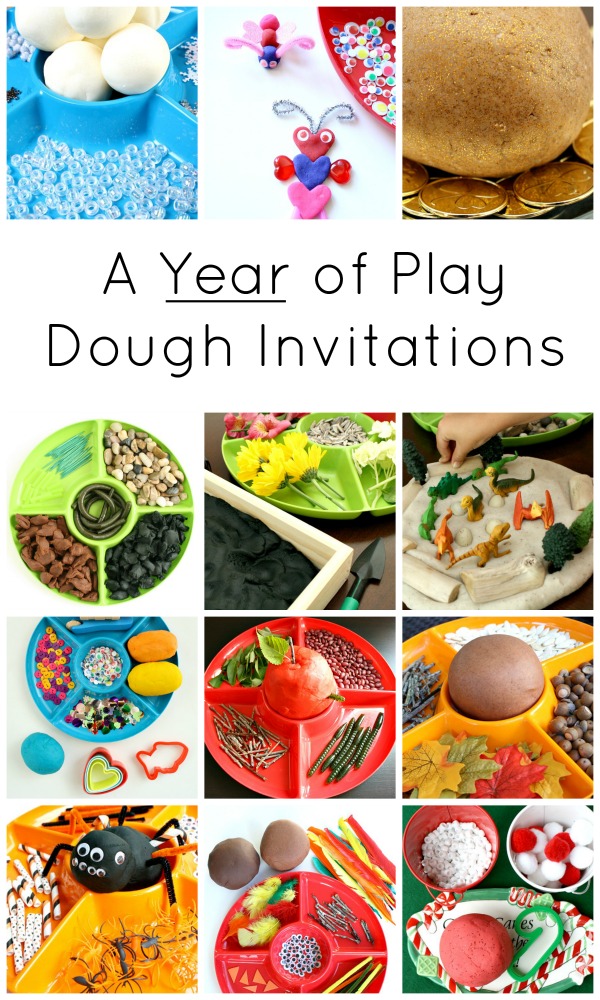
Play Dough Invitations for Every Month of the Year
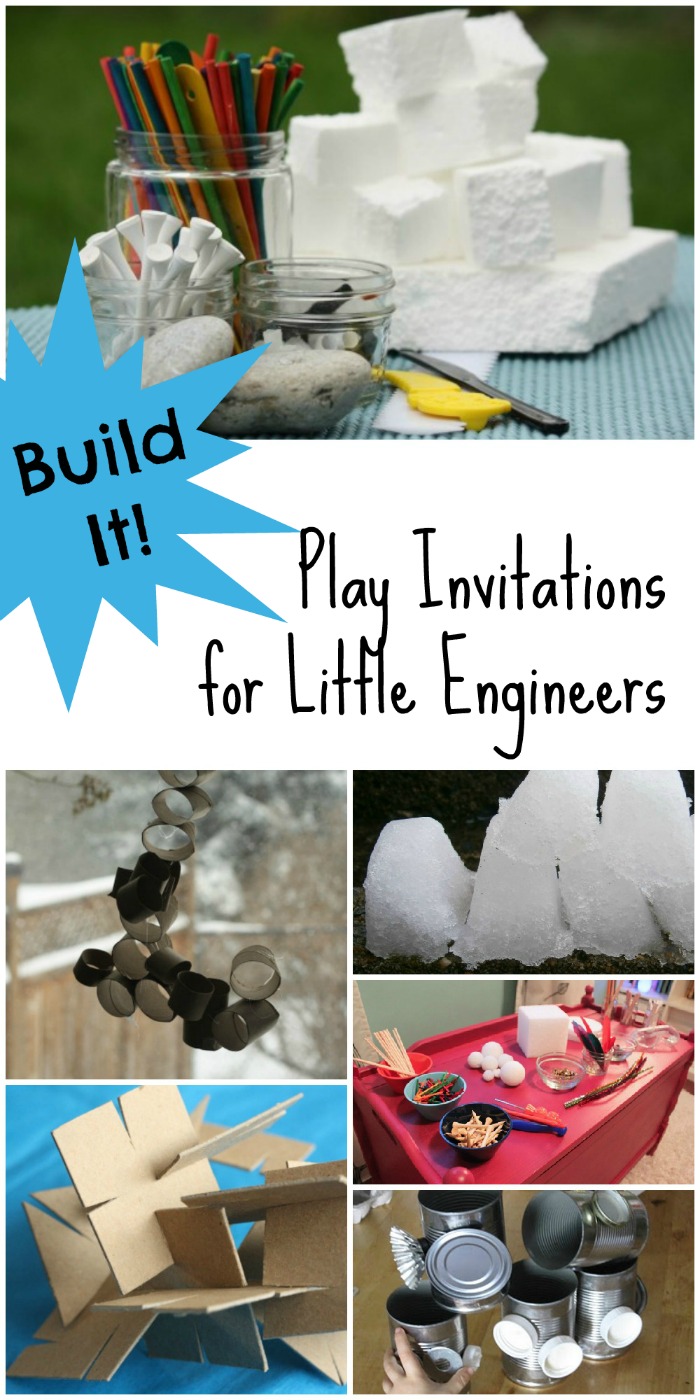
Invitations to Create for Little Engineers
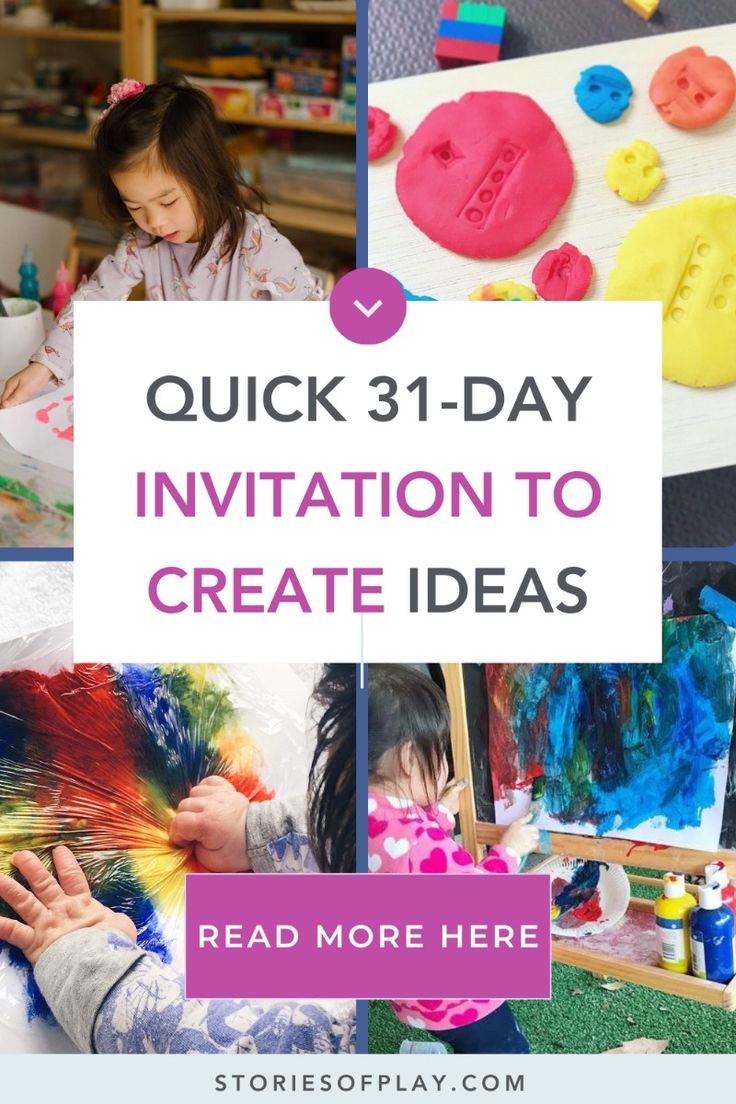
Easy & Quick 31-Day Home Art for Kids
Outdoor Play with Loose Parts Invitations
Introducing loose parts play can seem overwhelming at first. There are so many materials that can be used for loose parts play, but which ones should you choose? For some children (and adults), beginning to explore with the open endedness of loose parts can feel unnatural. Then there is the issue of setup and storage to consider. All of these concerns came to mind when I began to tinker with the idea of using loose parts with my own children at home. I decided to begin in a location that naturally inspires creativity while simultaneously providing a plethora of free materials: the great outdoors! In this second post of our loose parts play series, we’ll explore how you can enhance outdoor play with loose parts.
Loose Parts:
Go Outside and Play!
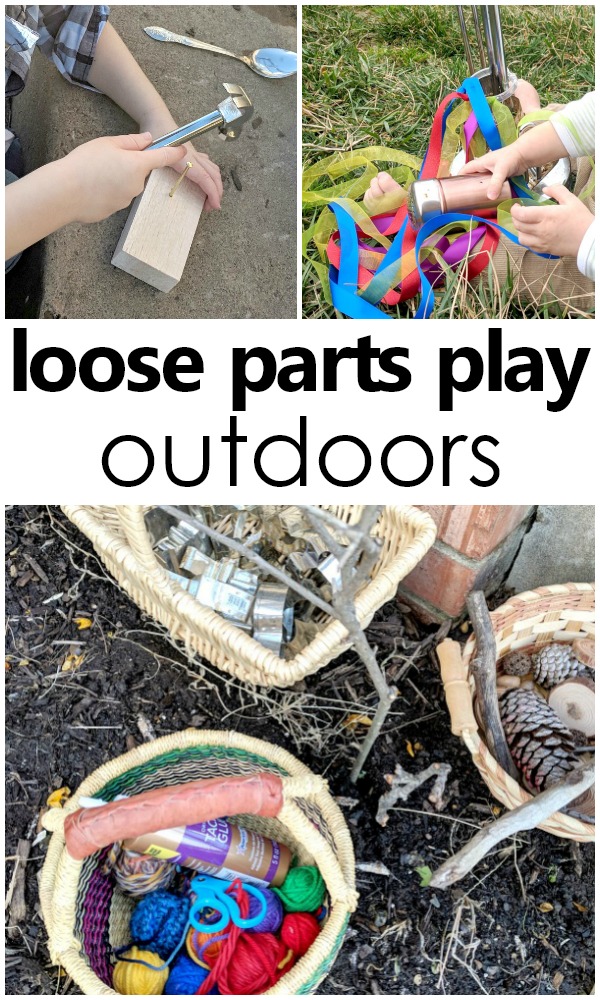
Inside classrooms and homes, there are often many toys to choose from. Most have a specific function. Outside, there may be more space but fewer toys. Children are naturally resourceful in their play outdoors. One stick can draw in the dirt or become a magic wand or stir a mug of freshly brewed mud coffee. Many sticks can be used for building a road or a log cabin. Children naturally gravitate toward nature’s loose parts to build, gather, connect, take apart, design, create and play. Loose parts play outdoors can infuse a child’s experience of nature. You can read more about some of the many benefits in this article.
If you are new to loose parts play, starting outside is one of the most simple and cost effective ways to go. Your children can help you search for and collect materials! I especially love to use wicker baskets for gathering and storing loose parts. Thrift stores are an affordable resource for these. I keep a small basket in my car just for the interesting rock, stick, leaf or collection of seed pods and acorns my three year old finds at the park.
There is no “perfect” outdoor space and even small spaces are just right for small children at play. Setting up your outdoor area to include loose parts can be broken down into three simple steps:
Gathering the Goods: Nature’s loose parts are all around us. If not in your own yard, chances are you’ll find them at a park or playground nearby. Water, dirt, sand, gravel and mud are also substances that can greatly enhance loose parts play outdoors.If access to water outside is a challenge, a plastic jug with a spigot is the perfect solution. Gathering loose parts from nature will become part of the experience itself. If you wish to add manufactured natural items, craft stores often carry a selection of tree circles, drift wood and tree blocks for purchase. You can even make these items yourself or enlist the work of someone in your family or community.
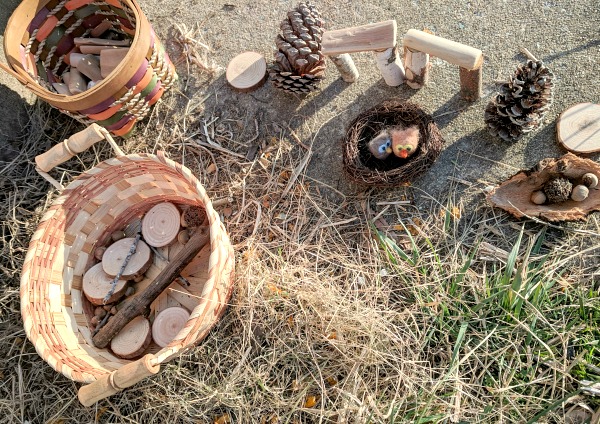
Add-ons from Indoors: Recyclables and common household items can become great loose parts. A variety of containers are useful for filling, pouring, storing and transporting. It is also helpful to note materials that can withstand the elements to be left outside or how you might store ones that are more sensitive to the climate. Consider items that will infuse your space with texture, color and even sound!
Play! You’ve gathered the troops. You’ve gathered the goods. Now you’re ready to play!
My baby loves stacking hand kites made from ribbon and shower curtain rings on an old paper towel holder. He stops briefly to rattle a tin salt shaker his older brother filled with gravel. He is exploring texture, color, sound and motor skills.
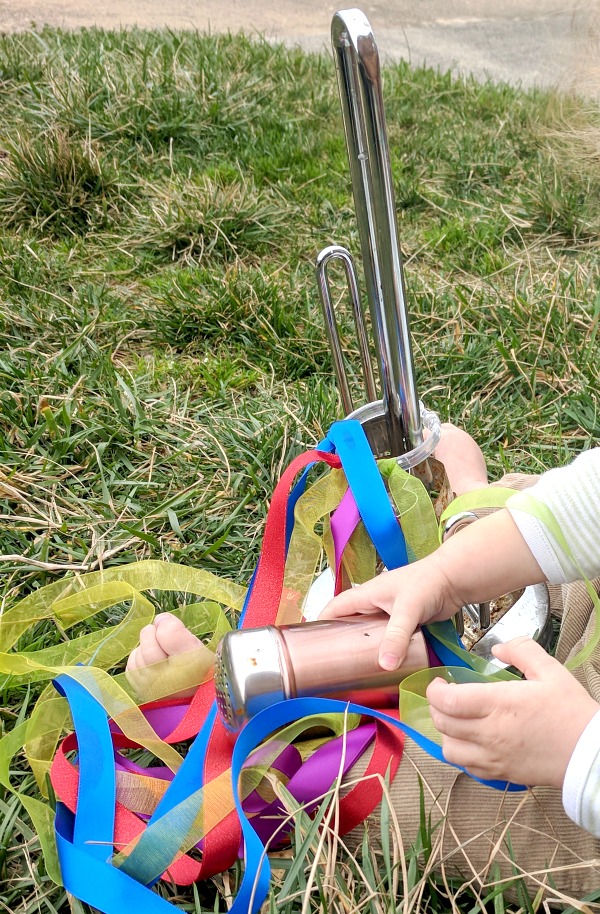
As your children begin to use loose parts outside, you’ll gain ideas of what might be added. Sometimes it can take time and tweaking to best set up your space. Don’t be afraid to get down and dirty with them–a curious adult encourages curious children!
Need a bit more inspiration?
Building and Constructing: Consider setting up a woodworking station. Scrap wood, small hammers and larger nails are great loose parts for inspiring budding builders. Adding in colorful yarn, rubber bands or zip ties offers opportunities to design and connect materials.
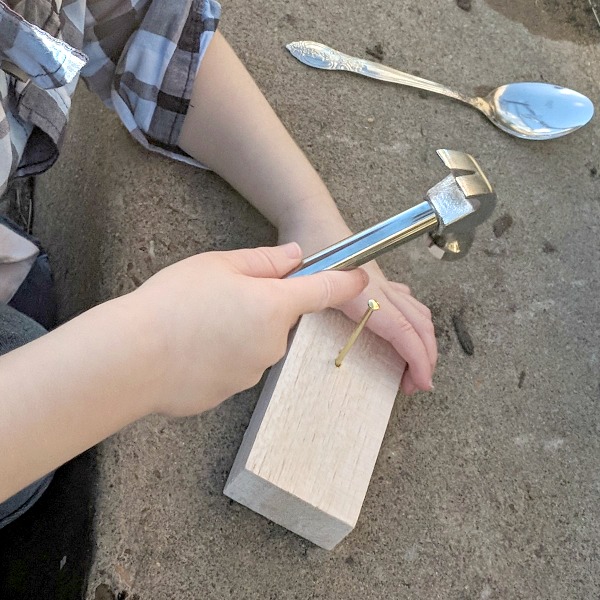
Texture and Color: Scraps of fabric, yarn and ribbon can inspire a variety of ways to explore with nature’s loose parts. A dab of tacky glue can secure the ends of a yarn wrapped nature wand. Strands of ribbon and strips of fabric can be woven into a unique fallen branch or even a living tree or bush. Your scissor lover can cut yarn and ribbon to set out for birds who might be looking to build a nest nearby.
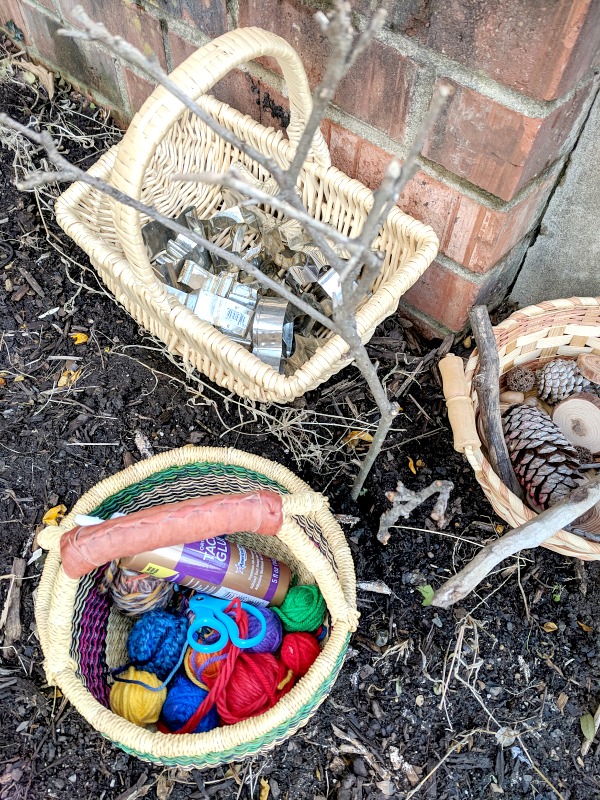
Light and Shadow: The outdoors is a great space to observe natural light and shadows. Old CDs make unique suncatchers, reflecting color and light in fascinating ways! They can be colored with permanent markers and hung or used to stack on a recycled CD storage case.
A Mud Kitchen: What child doesn’t love to make mud pies and fairy salads? A collection of bowls, spoons, cups and tins are all the loose parts you will need. You’ve got dirt, just add water and rest assured that children are washable!
Sound: Every child is a musician at heart! A collection of interesting metal bowls, baking pans and spoons might at one time be used in the mud kitchen for making the perfect cake and at another time used as an outdoor percussion band!
Working with the Weather: Loose parts play outdoors need not be reserved for the warmer months! One morning my preschooler observed ice that had formed in a pie tin the night before. After school, we bundled up and used some of nature’s loose parts along with a sliced lime and some yarn to create our own hanging ice sculpture.
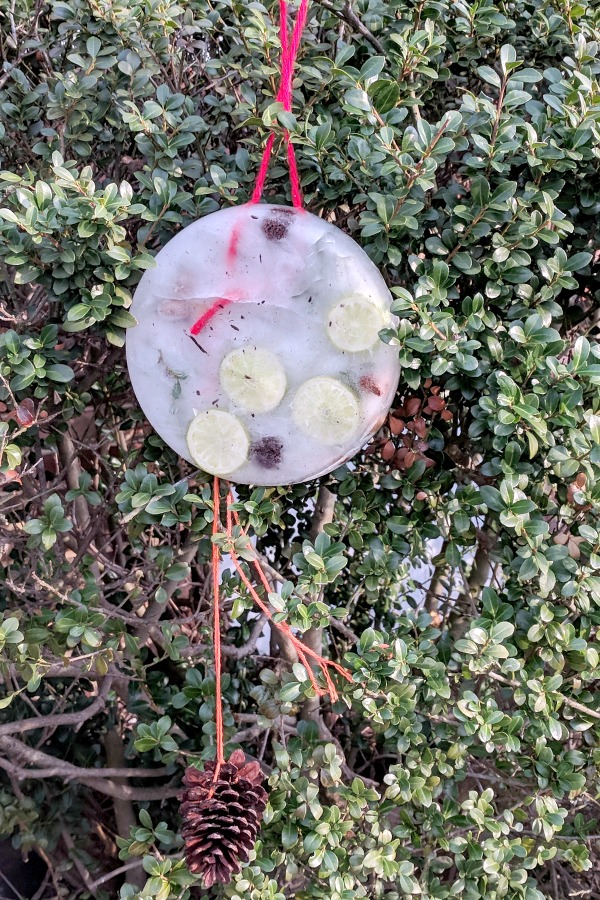
Once you start the process of infusing outdoor play with loose parts, you’ll likely be inspired to take it inside with you. Perhaps you’ll try this fabulous Bird Nest Play Dough Invitation! And if you’ve made it this far, you likely also can see that while they are busy at play, children using loose parts are learning a lot, too. Join me next time when we will explore the use of loose parts for teaching math! Be sure you’re on our email list, so you don’t miss the next post in the Loose Parts Play series.
For more outdoor inspiration read this article about setting up your own outdoor classroom.
See All of the Posts in the Loose Parts Play Series
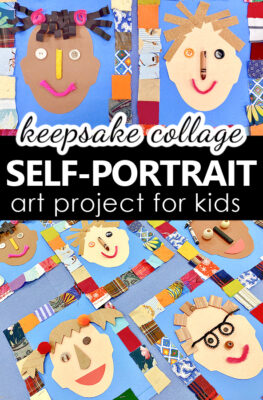
Collage Self-Portrait Art Project
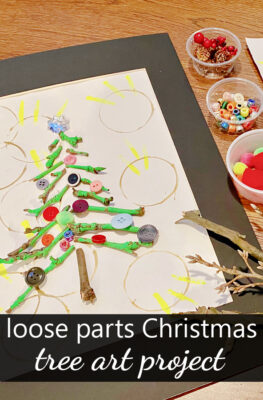
Loose Parts Stick Christmas Tree Art Project
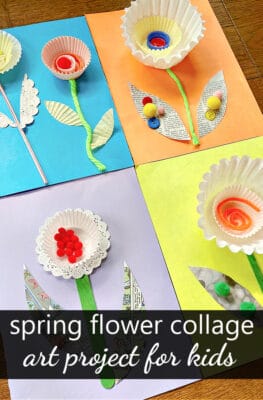
Spring Flower Collage Art Project
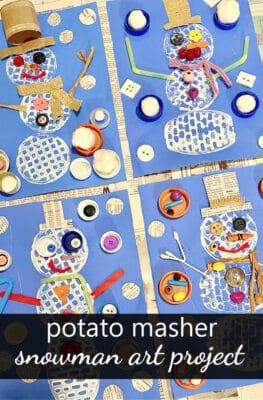
Potato Masher Snowman Art Project
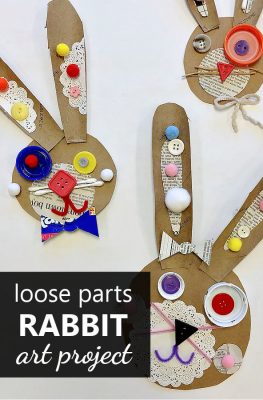
Loose Parts Recycled Rabbit Art Project
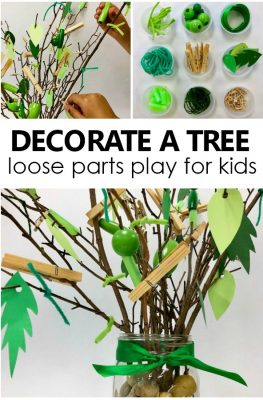
Decorate a Tree Loose Parts Play
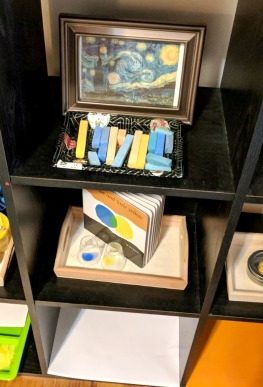
Art and Loose Parts Play
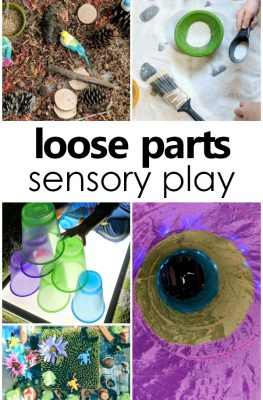
Loose Parts Sensory Play

Loose Parts Play and Literacy

Math and Loose Parts Play
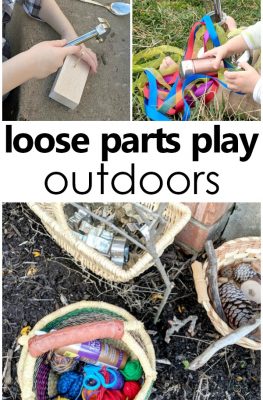
Outdoor Play with Loose Parts
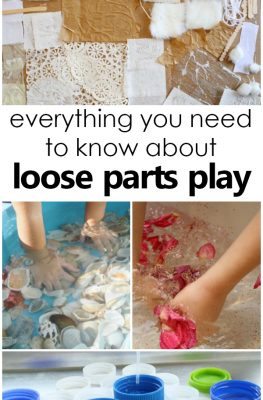
Everything You Need to Know
About Loose Parts Play for Kids
Resources That Will Turn You Into a Nature Expert
Planet Earth
In This Article
Do you wonder which species of bird it is that you keep seeing on your backyard fence? Are you curious about what butterflies are visiting your garden? Would you like to know more about the mammals that call your local park home? Thankfully there are plenty of smartphone apps that help you quickly and easily identify flora and fauna, record your findings and learn more about them. Not only that, but a few will even turn you into a citizen scientist!
Here are our favorite apps for making your dreams of being a wildlife expert a reality.
For Animals and Their Tracks
Not sure if animal tracks are from a bobcat or coyote?. Russell Shively/Shutterstock
iNaturalist.org: Thousands of species are logged in this app, so you can search through and learn more about the species you just spotted. Simply snap a photo, share it on the site and discuss your find with others.
MyNature Animal Tracks: Sometimes the only thing you spot are animal tracks, but that doesn't mean you have to go on wondering what kind of animal left a certain paw print. This robust app helps you match a set of tracks to a species through seven track categories and five scat categories. Use the illustrations to figure out the species as well as even the gait the animal was using as it traveled. It even has a built-in ruler for measuring track sizes, and gives tips for tracking animals.
For Birding in the Backyard or on the Trail
iBird: The apps from iBird are perhaps some of the best bird identification apps out there. Download apps specific to your area of the country, or certain types of birds. For instance, if you’re just getting started in birding, you can download the Yard+ guide for all the bird species commonly found around backyard feeders in North America. Or if you're more serious about identifying species spotted on the trail, the iBird Pro has nearly 1,000 species in its database with easy searchability for narrowing down possibilities until you hit on the correct species. There is even an iBird Journal for serious birders wanting to record every sighting.
Ebird mobile: Created by the Cornell Lab of Ornithology, this app lets you record and submit images of birds spotted to compare with images from other birdwatchers in their global database. Compare similar species side-by-side so you can make sure you're identifying the correct bird without the hassle of doing multiple searches. You can also discover birding hotspots and track your GPS coordinates with the app.
Merlin Bird ID App: If the other two apps aren't easy enough, this one strips down searching to about as fast and simple as it can possibly get. You just answer five quick questions and the app comes up with a list of possible species — and with a good deal of accuracy. It uses more than 70 million observations recorded in the eBird citizen science project to make its educated guesses. It also provides bird sound recordings and tips for identifying species.
Audubon Bird Guide App: From some people who should know.
For Butterflies and Bugs
There are hundreds of species of butterflies — each with their own unique traits. EpicStockMedia/Shutterstock
Leps by Fieldguide: Butterflies are some of the most beautiful insects you'll find in any garden, park, or hiking trail. This app is a crowd-sourced field guide to moths and butterflies. Scroll through the photographs to identify species, record observations, and display your collections.
For Trees, Plants, and Flowers
Whether looking at a flower or leaf, there are several apps that can help identify plants. Dmitry Naumov/Shutterstock
Seek by iNaturalist: Have you ever come across a flower or tree and wish you knew what it was? Well, this app can identify a variety of plants for you! Just take a photo with your phone, and the app will search for you. Seek can also identify animals. You can create a profile and upload all your discoveries, and the app will add it to its photo database for other users to explore.
MyNature Tree Guide: This handy app has two databases for searching by leaf or by needle, so you can identify over 190 tree species found across the U.S. and Canada. You can search by leaf or needle, or you can even search by question. It includes a ruler for measuring out leaf or flower sizes for more accurate identification, and also has a journal for recording your sightings along with other bonus features.
For Wildlife in Parks and on Hiking Trails
Are you curious to know what other activities there are besides hiking at national parks?. Anton Gvozdikov/Shutterstock
Park Wildlife: Our national parks are some of the best places to watch wildlife. This field guide will help you identify birds, mammals, reptiles and amphibians commonly encountered in 100 national parks across the country. Not only that, but it points out native endangered species as well as native poisonous or dangerous species to keep an eye out for in each of the parks included. As an extra bonus, it also gives information on park directions, hours, fees, phone numbers and other important info for getting out and identifying critters.
iNaturalist: This app is not simply an animal identification app. It's actually a social network for naturalists. You can record your observations of plants and animals and add them to the database. You can ask the community to help you identify something, keep track of everything you've encountered during hikes, build your "life list" of what you've identified to date, and most importantly, become a citizen scientist. By recording what you've seen with this app, you're helping scientists and land managers everywhere keep track of what's happening with the natural world. As the website says, "Maybe you'll rediscover a flower that was thought to be locally extinct, or help a scientist map the range of a little-studied beetle!"
Oh, Ranger! ParkFinder: Can't find where to take a hike? This app will help! Use it to find the nearest parks with the activities you want to do, whether that's hiking, bird watching, canoeing or whatever. This huge database features not only every national park, state park, and federal public land in the country, it also includes 50,000 local parks. With this app, there's no excuse for staying inside!
At last look, I had some 150 blogs in my Google Reader – which means I read a ton of stuff from around the web to help bring you ideas and inspiration for getting outside and connected to nature.
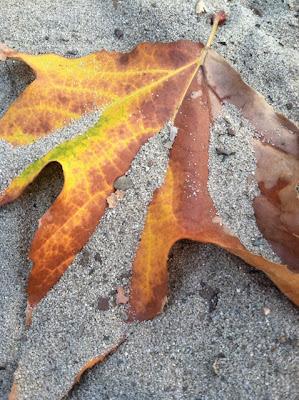
These are some of my favorites, the ones I can count on for creative and fun ways to excite kids about being outside in nature. The ones that excite me about traveling to far away places. And the ones that entice me to discover some place new right here in my own backyard.
Fellow Nature Explorers & Play Advocates
Kari at Active Kids Club knows how to have fun in all kinds of weather. And she is the gal to turn to if you want to know how to create an outdoor playgroup.
The National Wildlife Federation’s Be Out There movement features a ton of activities you can try at home, in your backyard, at school and beyond.
The Children & Nature Network leads the movement to connect children, their families and communities to nature. Here you can find evidence-based resources and tools for things like starting your own nature club.
Bethe Almeras, better known as the Grass Stain Guru, is a constant source of inspiration and support for play advocates. Her blog is a reminder of what childhood today should look like (hint: messy).
Let the Children Play is the brainchild of Jenny, an Australian early childhood teacher with some 20 years of experience. This is where I turn for ideas on messy outdoor play, natural playscapes and inspiring spaces to play.
Little Humbugs author Marghanita shares inspiring ways to bring magic to time spent outdoors. She’s also the creator of the award-winning children’s brand Little Humbugs, along with her latest creation, Orange Moon.
The Nature Rocks Activity Finder allows you to search by time available, location & age of child. And each season, there’s a free, downloadable activity guide. (I’m also a Nature Rocks Ambassador, so I’m a big fan.)
The Woodland Trust’s nature detectives offer a ton of free downloads to help kids connect with nature.
The Magnifying Glass describes itself as “an online nature journal” and makes turning the backyard into a place of nature discovery a snap.
TrailMix.Net is a great place to discover out-of-the-box activities and resources for things like starting a rock collection and geocaching.
There are quite a few outdoor moms I love for their commitment to getting outside every day. These inspiring women include: Abbie at Greening Sam & Avery, Lindsey at OutsideMom.com, Mel at Traveling Mel and Melissa at Adventure Tykes.
The Children’s Nature Institute provides hands-on, nature-based environmental education programs for kids in the greater Los Angeles area. These outings are a great way for families to get out exploring nature in Los Angeles.
Tracy at Walk Simply can turn any walk into an adventure. Her Southern California walks take her to beaches, city trails, nature walks and parks – sometimes with kids and sometimes without.
Animals and habitats in your state is great for knowing what is out there in your neck of the woods.
Other Outdoorsy Friends & Travel Lovers
Michael at Exploring Portland’s Natural Areas has got to be one of the coolest dads I know. He and his son Patrick spend a lot of time outside and he writes all about their adventures, including tons of gorgeous photos.
Frog Mom Laure spends a lot of time outside with her kids exploring Northern California. I especially enjoy her creative adventures, including a ladybug hike and a Harry Potter night hike.
Colleen at Travel Mamas is a great writer with a special place in her heart for all things nature. She lives in San Diego but writes about all kind of family travel adventures.
Sarah at Wandering Off is a travel blogger who has a special affinity for nature. I’m over the moon that she’s moved to Las Vegas, where she’s sharing all kinds of insider tips on discovering the natural gems the place has to offer.
Wildlife Destinations Guide fromtravel4wildlife.com From blue whales to butterflies and from worms to walruses, animals surround us in every corner of the planet. There are more amazing creatures than we can possibly see in a lifetime.
More Helpful Links
More about the book
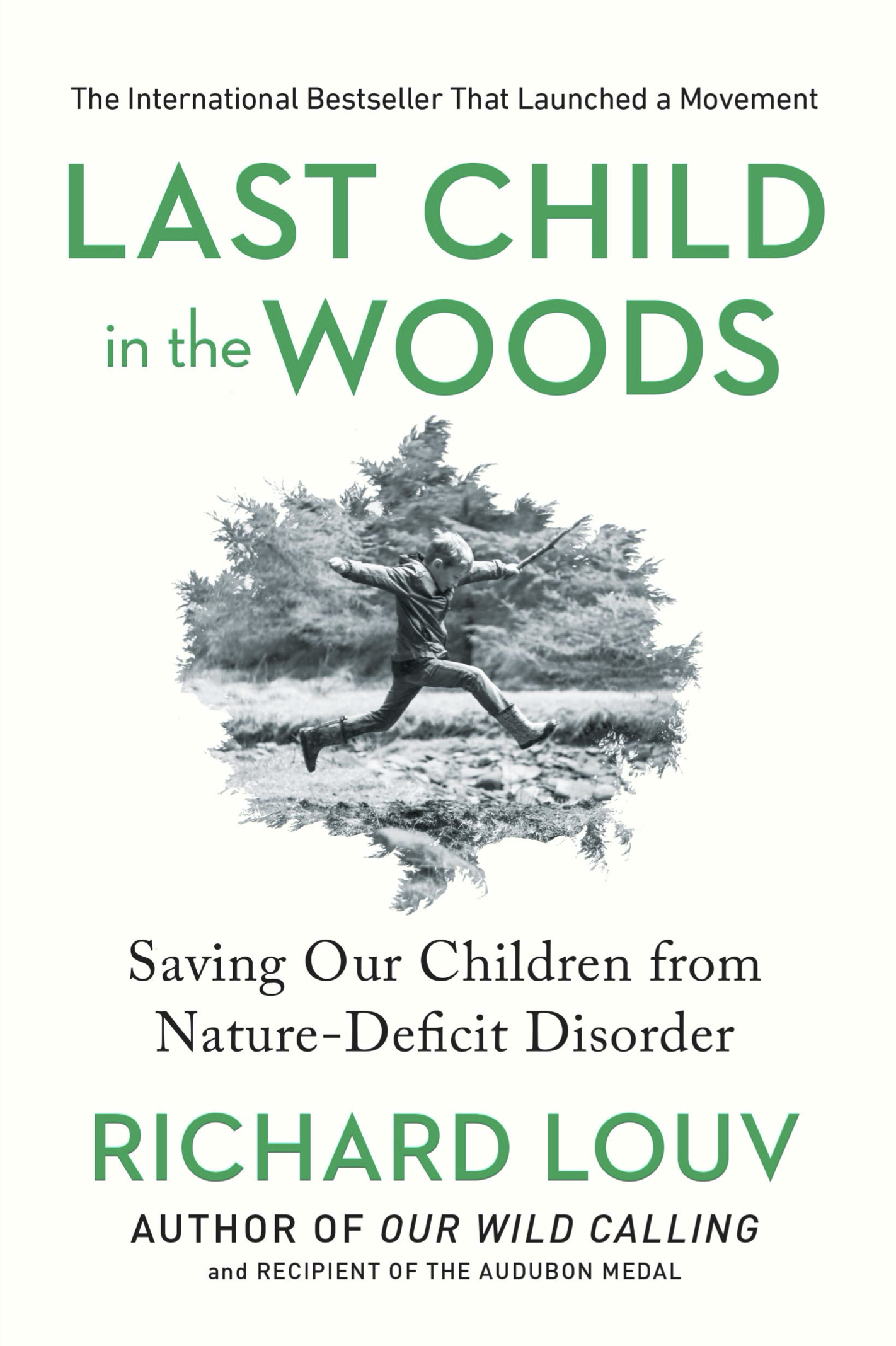
Nature-Based Screentime
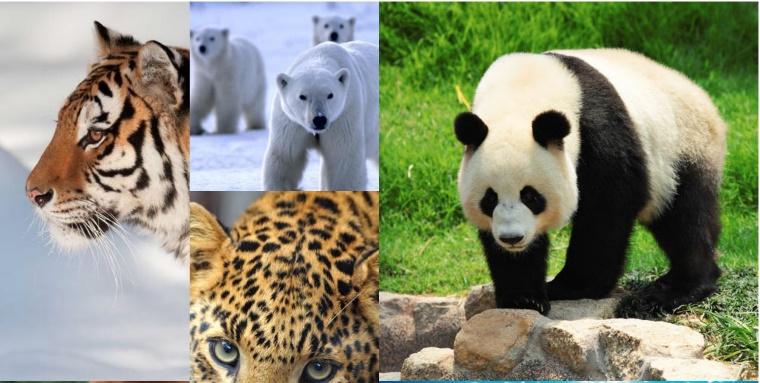
Nothing beats the great outdoors. But if your family is having some indoor time, don’t dismay. Your kids can still get a nature fix of sorts. Virtual nature, while inferior to the real thing, can be an effective way to help kids learn about the natural world. And in fact, it can even help your child learn something most schools don’t teach—natural history.
The key is to direct your child away from Roblox and Youtube and TikTok and towards these excellent resources that are just desperate to be noticed. Because, if you are going to let your kids on screens, let them become nature-smart while they’re at it.
Ranger Rick
Select pages from issues of NWF’s Ranger Rick magazine come to life on this website where kids can learn about the fascinating world of animals.
National Geographic Wild
National Geographic Wild is a place for all things animals and for animal-lovers alike. Your child can take a journey through the animal kingdom and discover things they never knew before or rediscover a favorite animal!
World Migratory Bird Day
Your child can learn about bird migration, adaptation or habitats on this site designed to help celebrate World Migratory Bird Day. One of our favorite features is the downloadable Bird ID coloring pages that will help your child learn their birds while having fun.
Wildlife Trusts' Wildlife Pages
Your child can learn about animals, adopt a native species or habitat or even spy on creatures live through a webcam system. The Wildlife Trusts’ wildlife pages offer excellent resources to learn about wildlife.
NWF’s Wildlife Guides
The NWF’s Wildlife Guides will help your child get to know the amazing wildlife in your backyard and beyond. Kids can explore fauna and flora found throughout the United States in a searchable database.
National Geographic Kids
For the animal lover, National Geographic offers a treasure trove of facts on mammals, birds, reptiles, amphibians, invertebrates and fish. Facts, slideshows, species maps, videos and games.
Nature Canada
There is a wide diversity of wildlife and wilderness to discover in Canada. Nature Canada lets your child take a moment to discover the nature found across Canada. With facts, vitals, range and super cute photos of species from dragonflies to Polar Bears, with a special emphasis on endangered species.
BBC Discover Wildlife
The BBC’s Discover Wildlife website can help your child learn how to identify specific species, wildlife habitats, conservation and many more animal facts. Focus on UK species.
FSNatureLIVE
FSNatureLIVE is a true distance learning adventure. The USDA Forest Service, Prince William Network and partners bring nature learning to you through our series of webcasts, webinars, and online education resources. Great videos on a diverse range of subjects from caves, butterflies, climate change, wetlands, and more!
Smithsonian Ocean Life
Take a plunge and explore ocean life, marine species and conservation issues on the Smithsonian’s site dedicated to ocean ecosystems and its species.
Go Explore offers Outdoor Play Ideas for Families by the Season
Toddler Hope’s Most Frequently Asked Questions About Animals
What are they called?
What does their house look like?
What do their babies look like?
What do they eat? -
Can I bring them lunch someday?
Are they nice to people?
Do people hunt them?
Do their moms stay with them?
Why did you forget the camera? LOL
I used these questions all the time to help me prepare for any field trip or adventure.
Plant Identification Apps
Plant Identification Apps for Nature Studies and Science Lessons
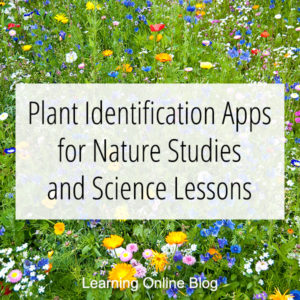
When you’re doing a nature study or teaching your kids about plants, plant identification apps can be helpful. These apps are perfect for identifying plants you see on a nature walk or showing your kids pictures and descriptions of specific plants you are discussing.
I have a list of these apps for you today that you can explore. Some of these apps are simply plant guides for your phone or tablet. Others have visual recognition software that can be used with your phone’s camera to identify a plant.
Plant Identification Apps
iNaturalist by iNaturalist, LLC: iPad – iPhone – Android
iPlant with Brigitte Mars by Lundgren Consulting LLC: iPad – iPhone – Android
With Visual Recognition Software:
PictureThis – Plant Identification by Glority Software Limited: Android
PlantSnap – Identify Plants, Flowers, Trees & More by PlantSnap, Inc.: Android
PlantSnap Pro – Identify Plants, Flowers & Trees by PlantSnap, Inc.: iPad – iPhone – Android
Plant Identification by Phuong Bui: iPad – iPhone
I hope these plant identification apps were useful for your nature studies. Know of anyone else who would like them? Share this post with them.
More help on this site with nature studies:
Many blessings,
Superscript
Planting a Tea Garden
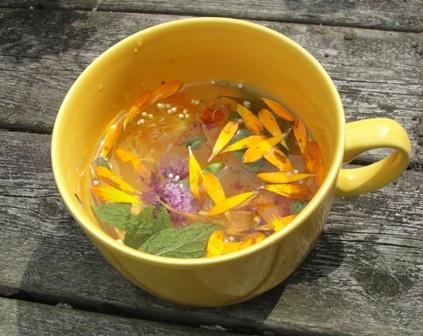
Your child may know that she can grow food in a garden, but did she know she can grow drinks as well? Help your child plant a “tea garden": a garden made of herbs for making teas. She will enjoy playing in the dirt, and afterwards she can sip a hot or cold tea made with her own plants!
What You Need:
Various tea herbs from plant stores: apple mint, bergamot, chamomile, cinnamon basil, lavender, lemon balm, lemon verbena, peppermint, spearmint, etc.
Large plant container or garden area
Potting soil
Shovel
What you need for your tea party:
Hot water, tablespoon, mug, tea strainer
Optional: sugar and stirring spoon
What You Need to Do:
1. Take your child to a plant shop to select herbal tea plants. Take the list of plants above for ideas.
2. At your home or a community garden, have a large container and potting soil available or garden soil area.
3. Let your child read the planting directions that accompany each plant. General directions are also listed below.
4. All the herbs listed above grow in areas of full sun. Your child can use the shovel to dig areas in the ground or in the container’s potting soil for the plants. Note that lemon balm and mint herbs are best confined to containers since they can become invasive in gardens.
5. Let her water herbs after planting according to each plant’s directions. For most of these plants, the leaves are used to make tea. Chamomile and lavender are exceptions, as tea is made from their flowers. Bergamot has leaves and flowers suitable for making tea.
6. Let her pick leaves or flowers for tea. Leaves should be rubbed together to release their essential oils. Let her put the leaves (and flower buds for chamomile, lavender, or bergamot) into a tea mug. She should add three tablespoons of leaves or flowers per cup. (We used our wild berries from the yard.)
Be sure not to use any leaves or flowers that were treated with pesticides, and make sure your child doesn’t have plant allergies before letting her drink herbal teas.
7. The parent can pour boiled water into the cup. Let it steep for five minutes. Help your child use a strainer to separate leaves and tea.
8. Sip and enjoy! She may wish to add sugar. If it’s sunny outside, bergamot and peppermint make good iced teas.
Additional Tea Party ideas
When choosing snacks for your tea party get creative with what you already have on hand. As a general rule of thumb, mini is always better. Maybe I’m the only one who feels this way, but somehow small finger foods feel fancier. Only have ingredients for peanut butter and jelly? Cut your sandwiches in small squares or use a cookie cutter to make a fun shape. You’d be surprised how excited your kids will get simply by putting normal foods on fancy plates.
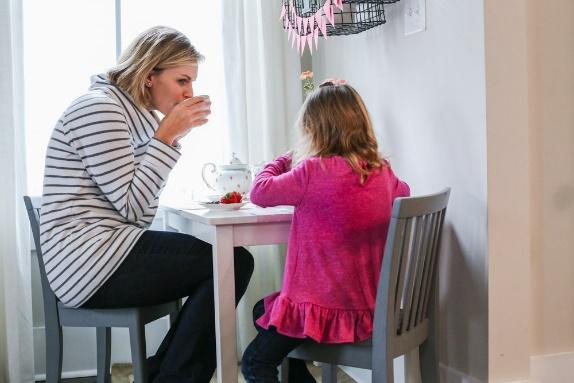
We made Pumpkin Gingerbread mini muffins for breakfast and I thought they would be the perfect little treat for our tea party. I simply put them on a cake stand and served them with fresh berries. I also mixed up a pitcher of pink lemonade to use as our ‘tea’.
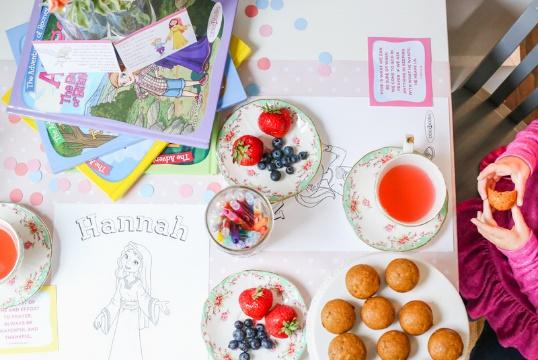
When our littlest one woke up from her nap, she didn’t even skip a beat and joined the party right away. You could tell that she was so proud that she was included. Plus she got to stuff her face with strawberries and that’s pretty much her favorite thing in the entire world.
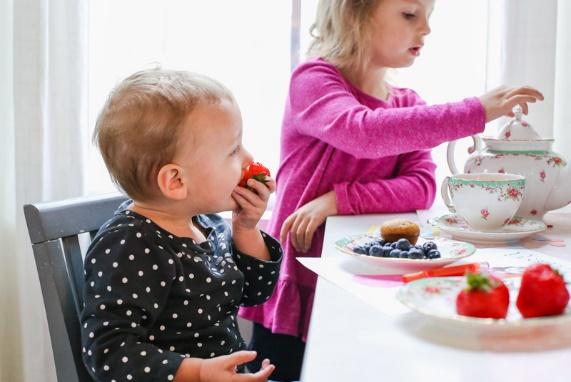
Enjoy a Simple Activity Together

After you’ve finished your special treats it’s always fun to enjoy an activity together. You could build with blocks, read, or work on an art project. Pick a few things your child really enjoys, sit down, and really enjoy being together.
TIPS FOR CHOOSING PLANTS
What's a garden without plants? From wildflowers to fruit trees, they all play their own important part in making a home for nature.
This section tells you everything you need to know about planning your garden and selecting, planting and managing trees, shrubs and flowering plants to achieve the maximum potential for wildlife. Grow a wide variety of plants and you'll offer food and shelter for all sorts of wildlife.
Planting
Flowering plants & flower borders
A garden rich in colourful nectar-rich flowers is a haven for nature. Learn how and what to plant.
How to plant shrubs for wildlife
Hanging Baskets,Tubs and planters
You don't have to have a big garden to give a home to nature. Tubs, pots and other planters are great options for small spaces.
Choosing the right kind of plants for you, your garden and the wildlife in it, is an important part of building a successful nature friendly space.
Find out as much as you can about the soil, and whether your garden is sunny or shady. Many plants need specific soil and light conditions. Look around and find out what grows well in your local area, or find plants that require similar conditions to those already thriving in and around your garden.
Think about foliage as well as flowers, try to include leaves of different colours, shapes and textures, and mix evergreens with deciduous plants. Check in a gardening book or on the label to find out how large the plants will grow and what maintenance they need and when.
Look at possible plants choices from all angles. For example, not all ornamental fruit trees will produce fruit, but they may be valuable in other ways. Varieties susceptible to insect attack for instance, are valuable to birds and other insects which feed on the offending insect.
Have foresight and build for the future and not just the present. It’s important to remember that many plants often take several years to mature. For example, you are not likely to see a song thrush feeding on ivy berries for at least five years.
You may also choose to remove plants from an existing garden, but careful consideration should be given in mature gardens before removing an established plant to replace with a new one. Think about how it might impact existing wildlife, and whether what you're looking to replace it with will bring the same value and thrive in the same place.
CONSIDER GROWING NATIVES
No matter where you are, you can beautify your landscapes with their diversity of forms, shapes, and colors. By using native plants, the beauty of our developed landscapes is amplified by butterflies, birds, and other cherished wildlife that are supported by them. Grow Native has a really simple database for parents.
Native landscapes in altered landscapes and the built environment can be naturalistic or formal. The resources listed below can help you establish and maintain native landscapes that are aesthetically pleasing to you.
A WILDLIFE-FRIENDLY GARDEN
IS REALLY IMPORTANT
Built up areas and gardens might seem unlikely places for finding wildlife. But perhaps surprisingly they can provide homes for some of our most amazing wildlife, from city peregrines to urban otters! There are lots of ways we can help them be even better for wildlife though...
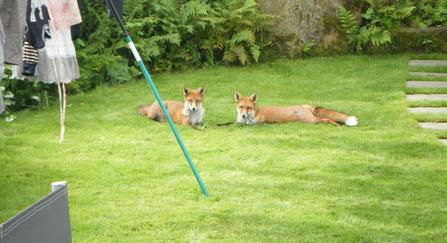
Tessa Andrews
Foxes, badgers and hedgehogs are all at home in our towns and gardens. Garden ponds provide homes for frogs, common toads and newts. Swifts, house martins and pipistrelle bats make our homes and buildings their homes too!
It's amazing how much wildlife can find its way into our gardens if we provide habitat for it. You'll also be surprised how much wildlife comes out at night, whilst we sleep! Emily from Devon Wildlife Trust tells us more about urban wildlife in her video.
Numbers of house sparrows, song thrushes, dunnocks and starlings have all declined in the countryside, and are now considered endangered. But you can help them, by providing food and places for them to breed in your garden. Feeding the birds brings us closer to nature, and there's a good chance you'll see sparrows, thrushes, dunnocks and starlings in your very own back garden or park if you help to look after them.
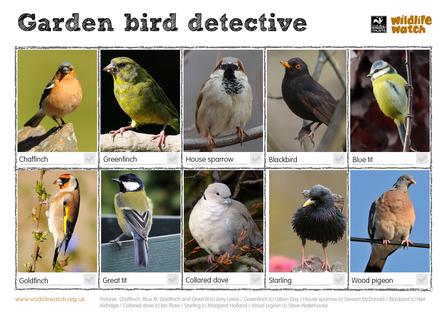
GARDEN MAMMALS
Many mammals that would have once lived in the countryside, have learnt to adapt to our towns and gardens; keep a look out for hedgehogs, foxes and house mice. There are lots of ways you can help mammals in your back garden.
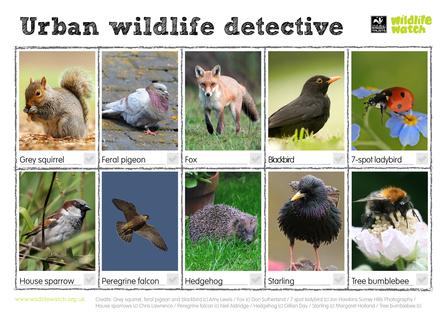
GARDEN PLANTS
Plants are not only beautiful, but they also encourage pollinating insects, such as bees, to come to our gardens. Try to grow native plants, if possible, as our insects often like them the best!
GROW FLOWERS FOR BUTTERFLIES
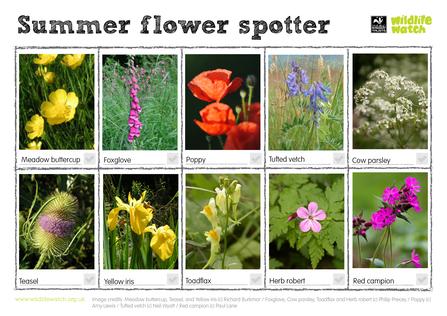
GARDEN MINIBEASTS
Not only are minibeasts fascinating to watch, they're also essential for so many reasons. They're pollinators and are food themselves for lots of the other wildlife that live in our gardens, such as birds and hedgehogs.
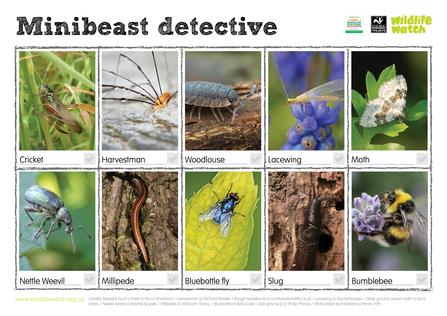
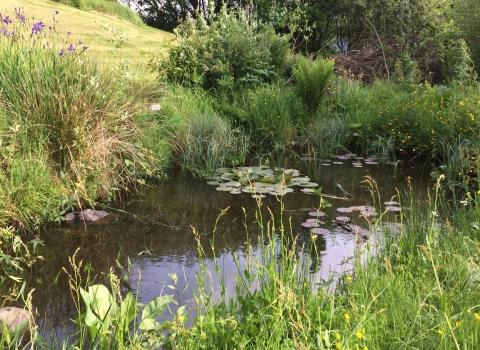
DID YOU KNOW?
There are estimated to be more than two million garden ponds in the LOCAL alone and these are fantastic habitats for frogs, newts and dragonflies.
MAKE YOUR OWN MINI POND
10 WAYS TO START BUILDING A GARDEN FOR WILDLIFE
Turn your garden into a wildlife sanctuary with these eco-friendly tips
With natural areas diminishing, we must raise the bar of what we ask of our landscapes. We can no longer be satisfied with gorgeous gardens that are not also designed to support ecosystems.
Here are ten easy ways to fill your garden with biodiversity and beauty:
1. Plant an oak
There are native oaks for just about every state in the U.S. These trees form the hub of a native garden, providing habitat and food. In most counties, oaks support more than 450 species of moths and butterflies. Moths and their caterpillars are important food for birds.
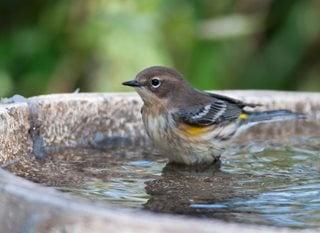
Photo by: Gerald A DeBoer / Shutterstock.
Learn more about growing oak trees: Planting Oaks.
2. Add a bird bath
Keep it shallow! Birds will not use a bath where the water is deeper than their legs. A bath 1 inch deep by 15 inches diameter will attract avian friends. If you have access to a large stone, you can carve a shallow bird bath into it for a natural look.
See a Portland garden full of birds:
A Naturalistic Garden Welcomes the Birds and the Bees.
3. Create a layered planting or border
If you have the space (it can even be as small as 10 by 10 feet), build a multilayer planting: Add a row of canopy trees (maples, hollyleaf cherry); weave in medium-sized trees and tall shrubs (willows, toyon); tuck in shrubs (sweet pepperbush, manzanita); fill in with herbaceous plants (native grasses, salvias); carpet with groundcovers (spring ephemerals, checkerbloom)
4. Build a native arbor
Use branches of native trees to build organic allées and arbors that are nice to look at and good for wildlife. You can grow native Halesia diptera over an arbor for a formal look or a native vine for an informal feel.
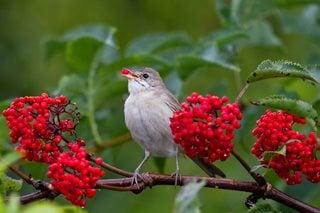
Photo by: Bachkova Natalia / Shutterstock.
5. Add groves or thickets
If you have an underutilized space, plant groves of native trees, berry bushes, or coyote brush to provide food for yourself and the birds. For a clean look, plant a single species.6. Plant native fruit trees
Pawpaws, persimmons, black cherries, and serviceberries support birds, caterpillars, and butterflies-and supply delicious produce for you.
7. Screen with native hedges
When creating a screen, plant native shrubs such as Alabama snow wreath or coffeeberry to provide habitat and food for wildlife. Don’t hesitate to use several species that work together, including an occasional red cedar or incense cedar for accent.
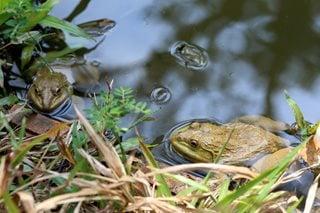
Photo by: Ekachai Stocker / Shutterstock.
8. Encourage pools and ponds
Add a pool or pond in an area of your garden where water collects naturally. Even a small one can support several species of frogs as well as toads, spring peepers, turtles, and more. Line it with water lovers like willows, buttonbush, winterberries, sedges, and rushes.
9. Make a meadow
Even a small 5- by 10-foot meadow garden can supercharge a garden with wildlife. Adding a mix of native milkweeds and umbellifers can help fill a garden with activity from butterflies, bees, and birds.
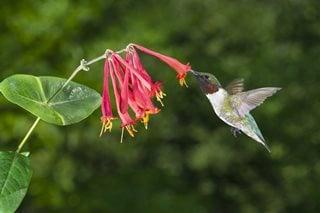
Photo by: Patrick Jennings / Shutterstock.
10. Grow vines
Native vines are a secret weapon of wildlife gardening—especially in a small garden, where letting natives climb up arbors, over trellises, and along fences maximizes limited space. Hummingbirds will often visit trumpet honeysuckle and native clematis.
Bonus resource:
A web tool recently launched by the National Wildlife Federation makes it easy to discover which indigenous plant species are the very best at supporting the insects that drive local food webs. Simply enter your zip code for a ranked list of the plants in your county that produce the most caterpillars and thus support the most wildlife. Access the tool here: Native Plant Finder.